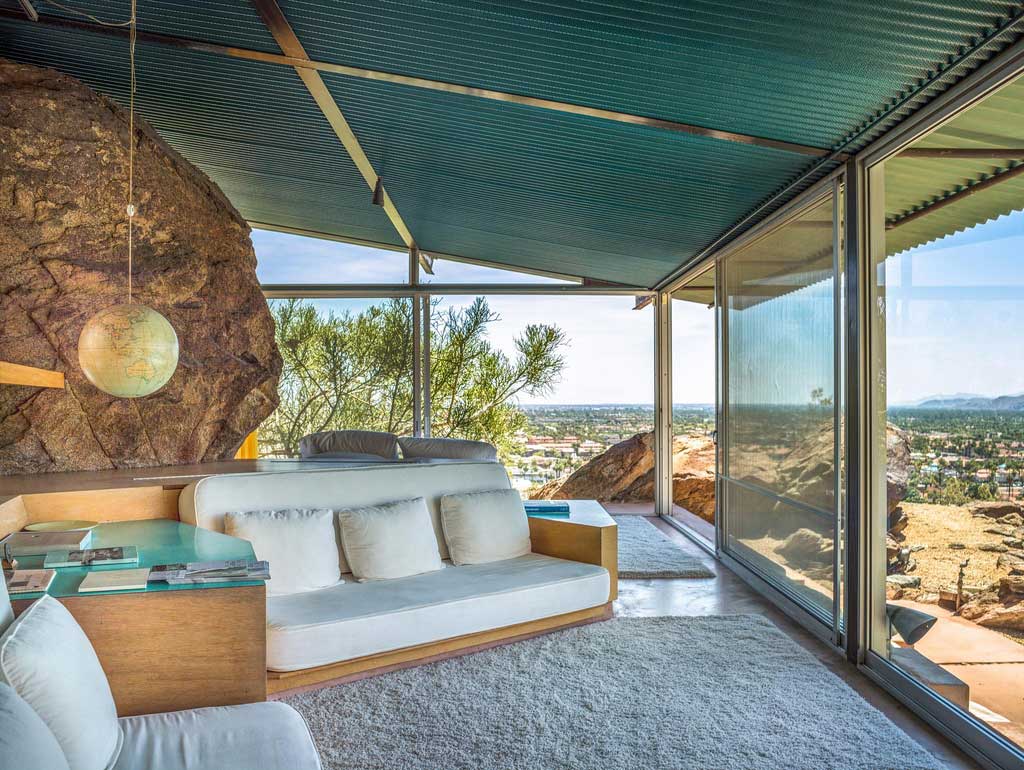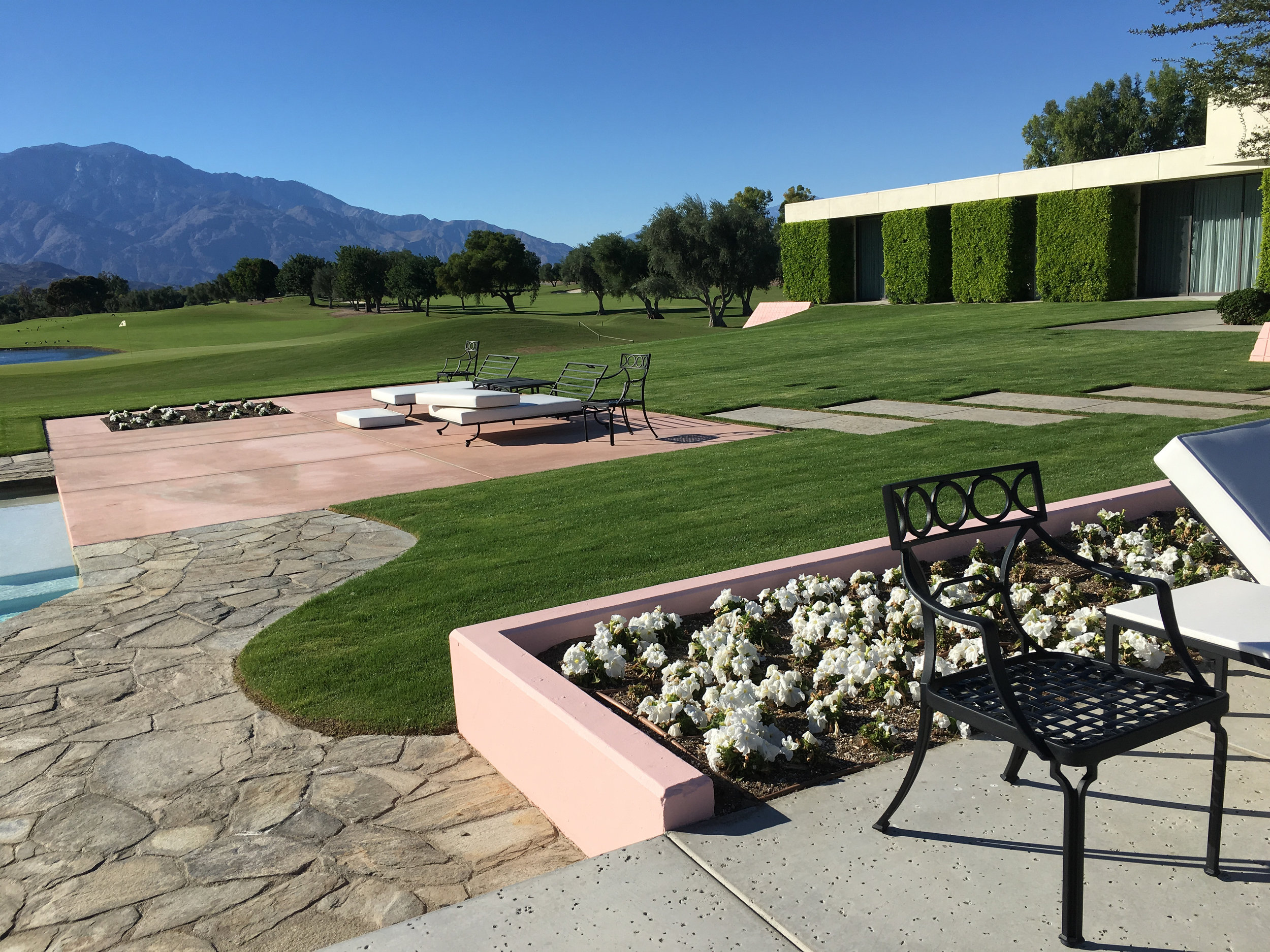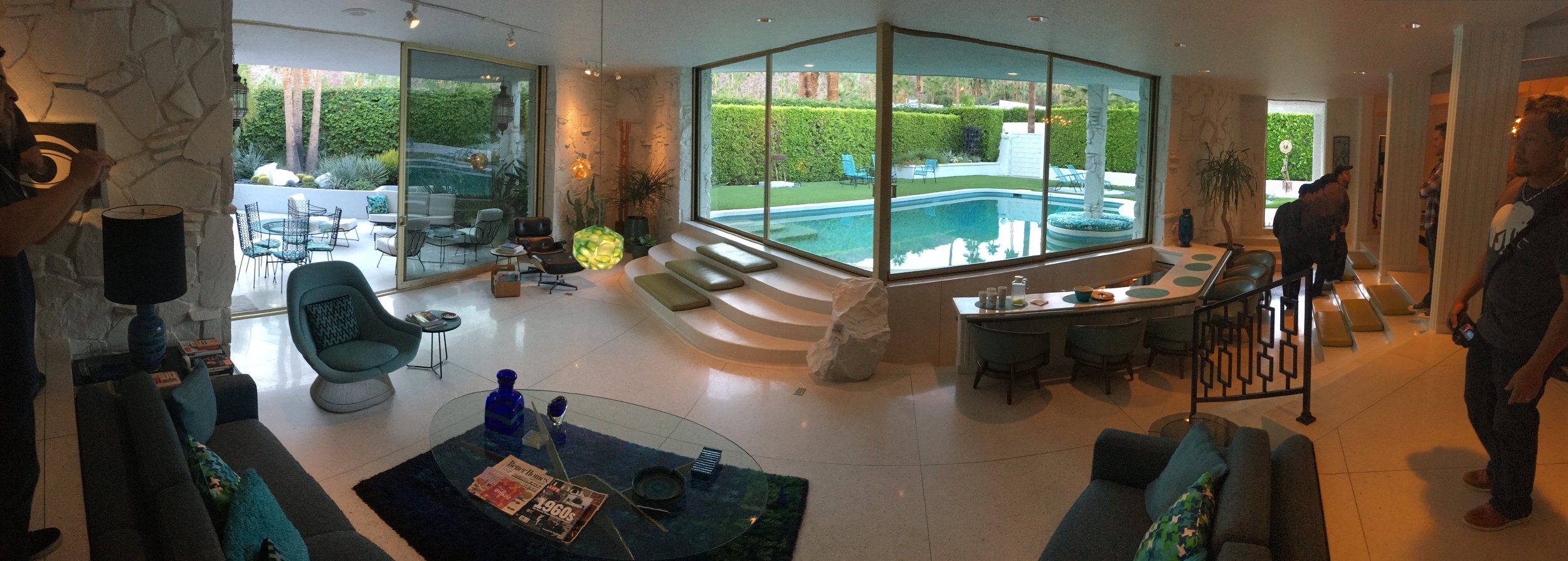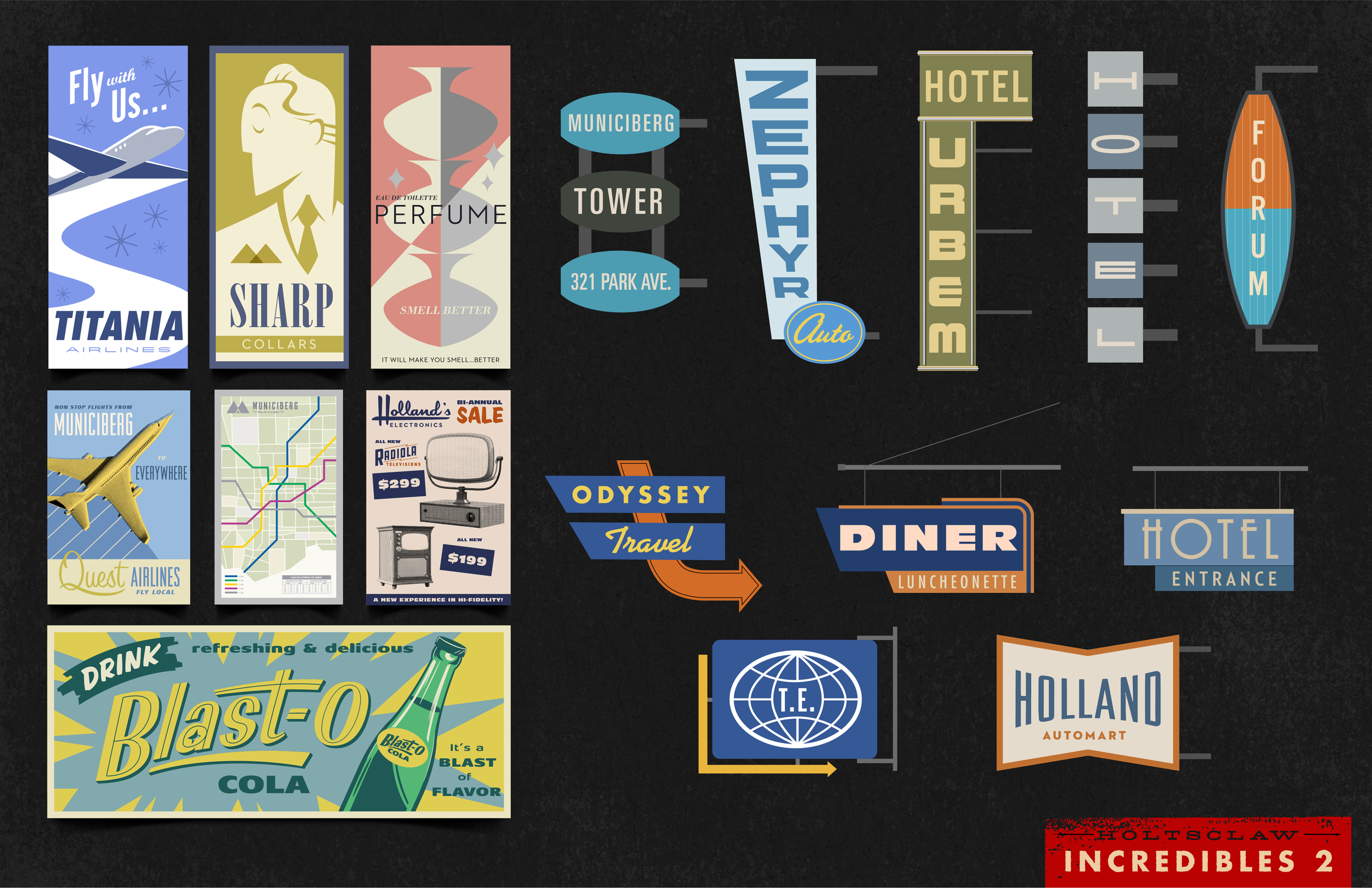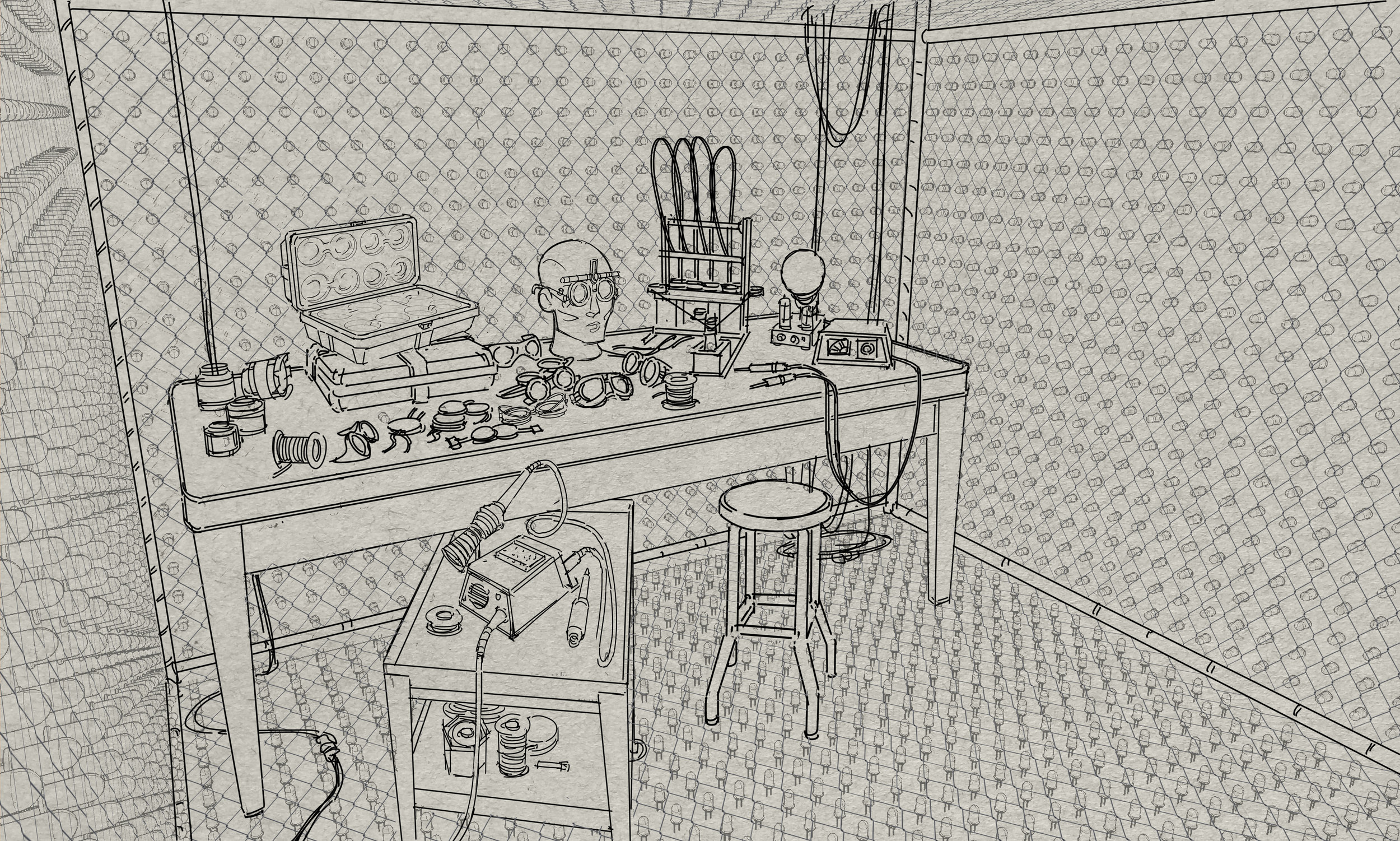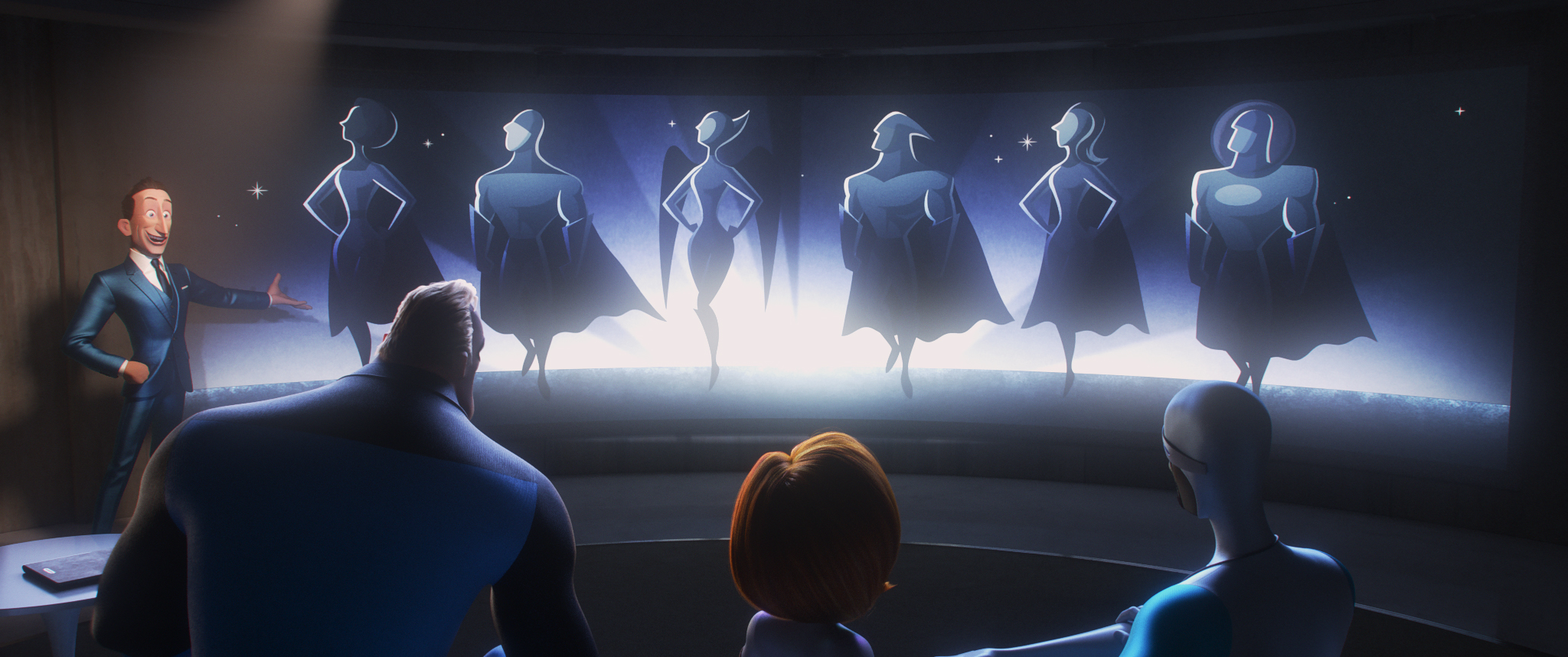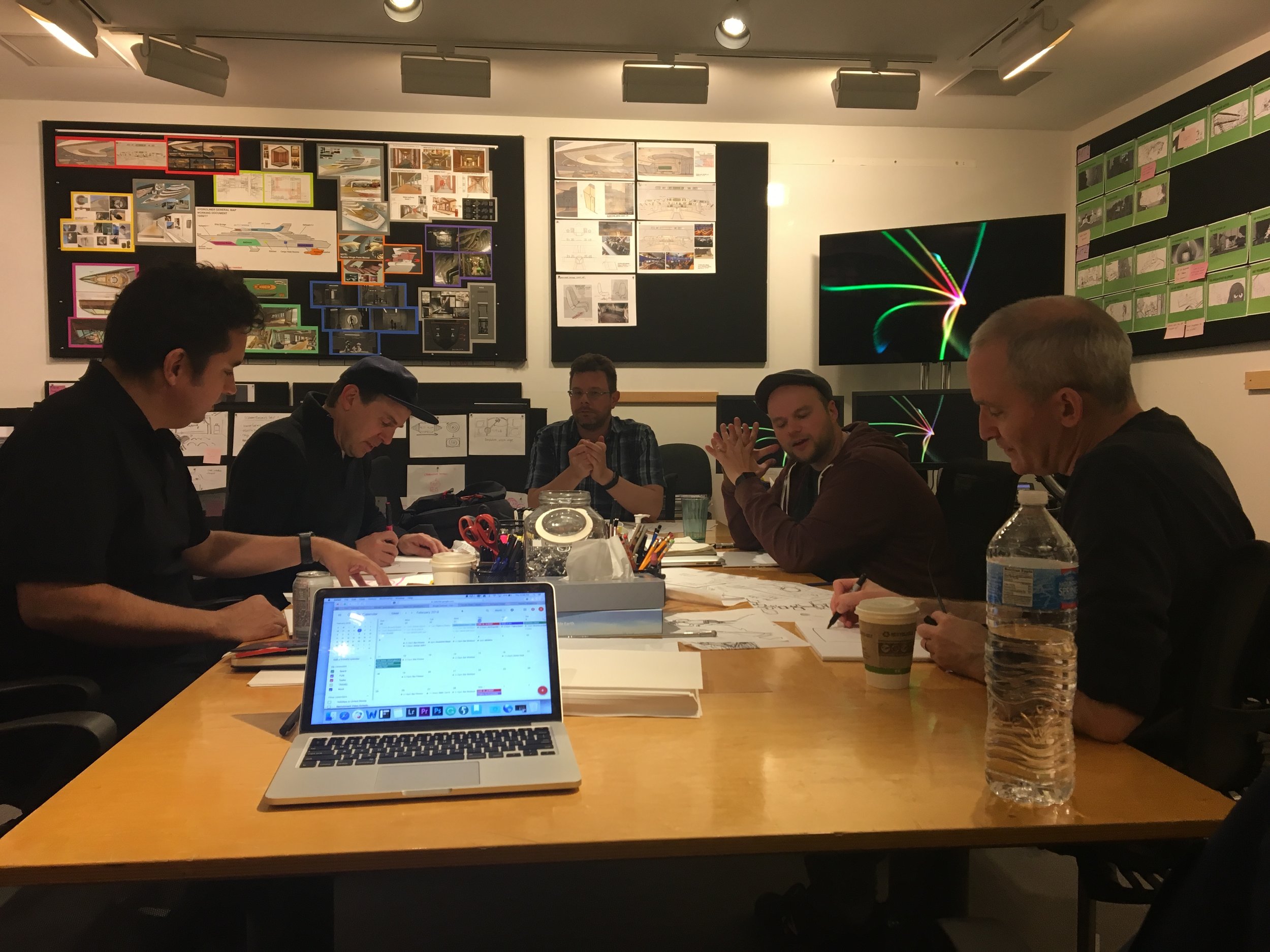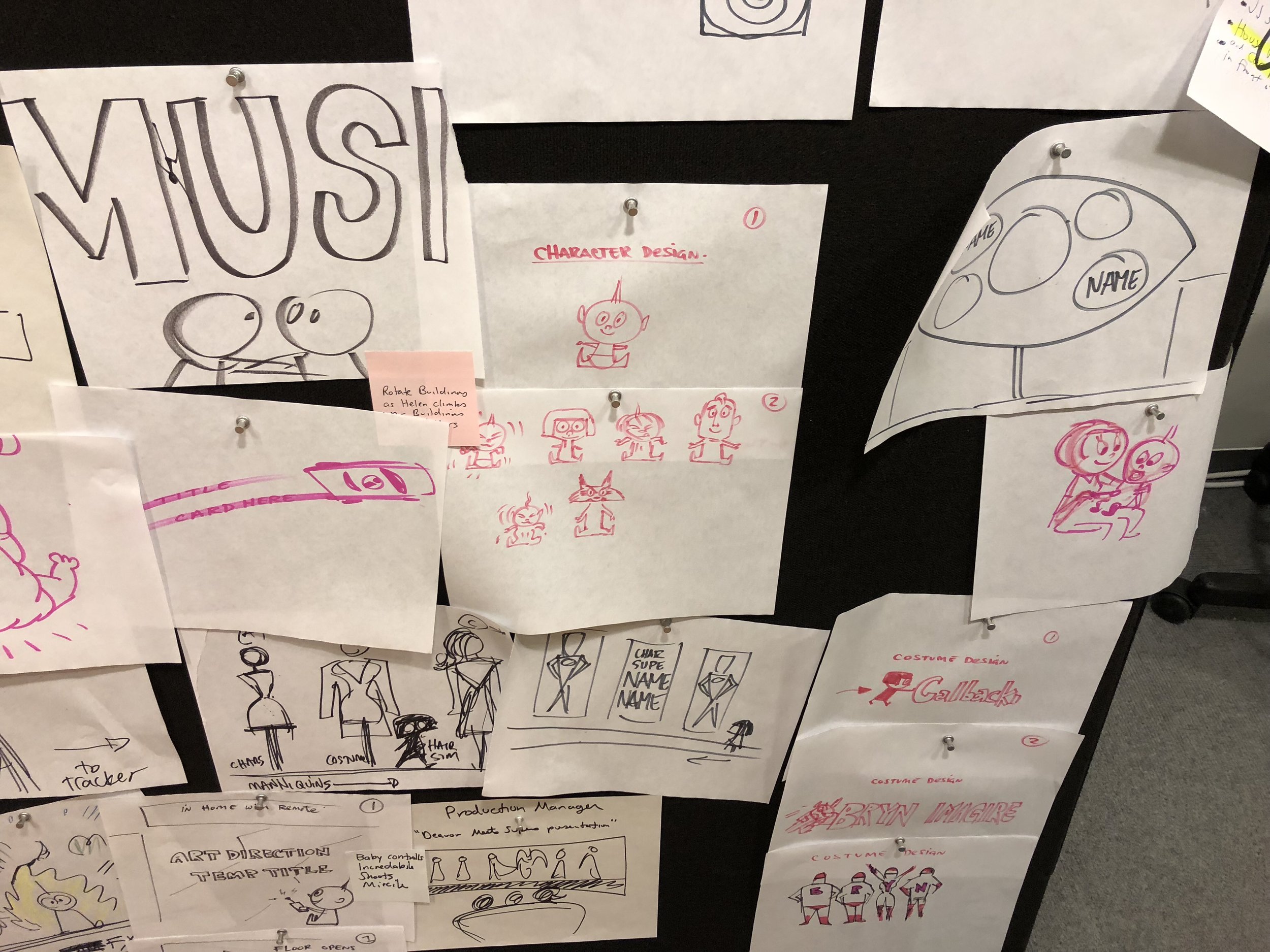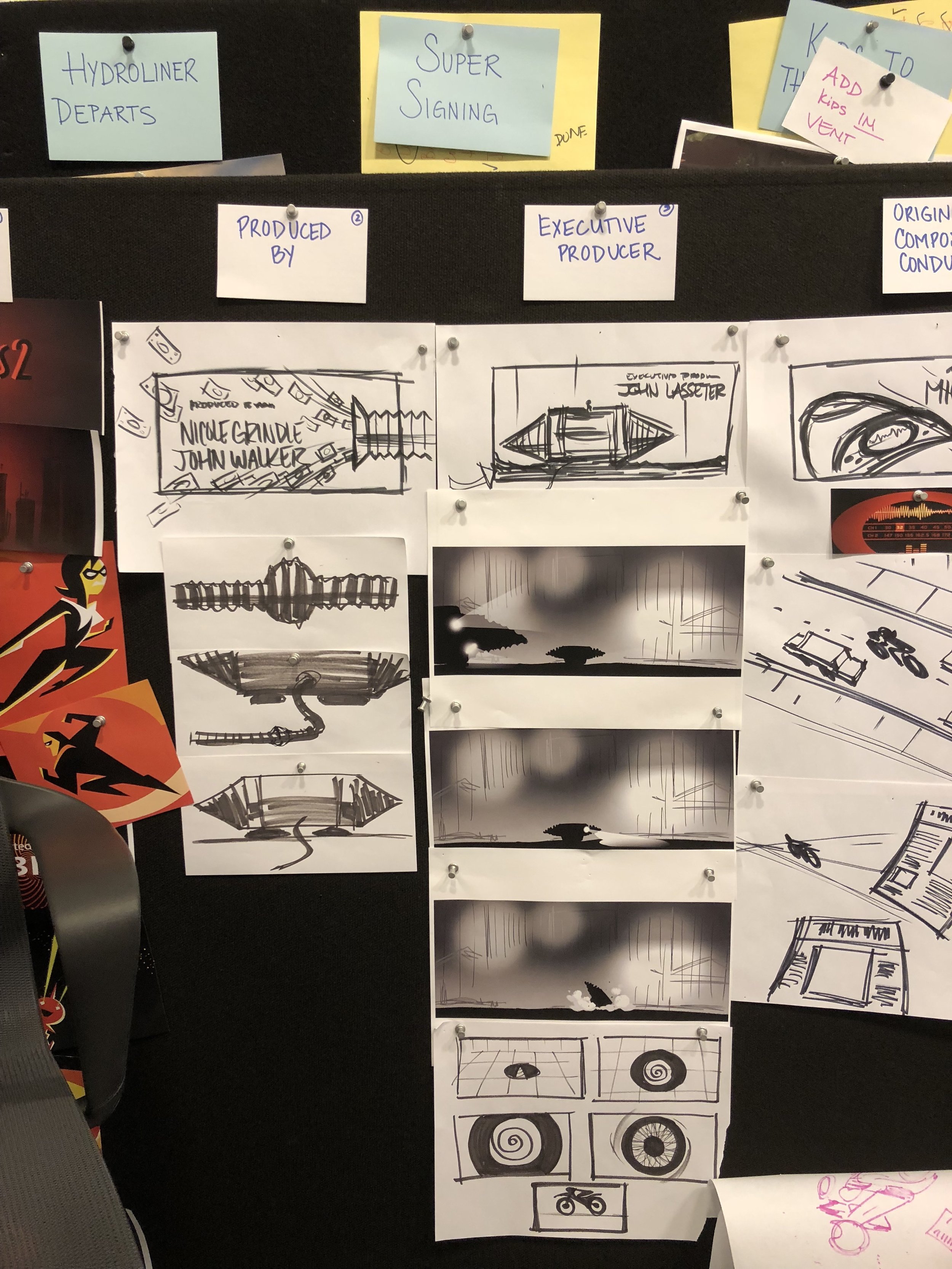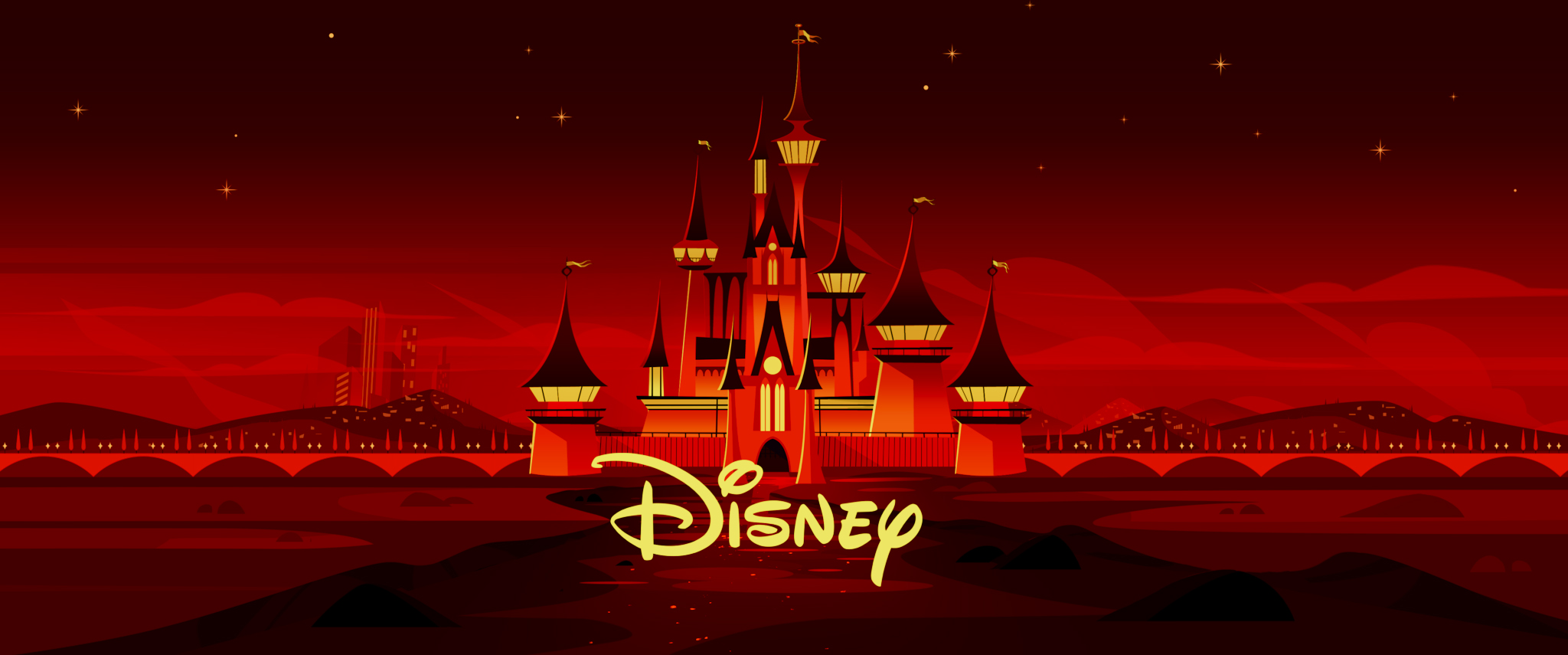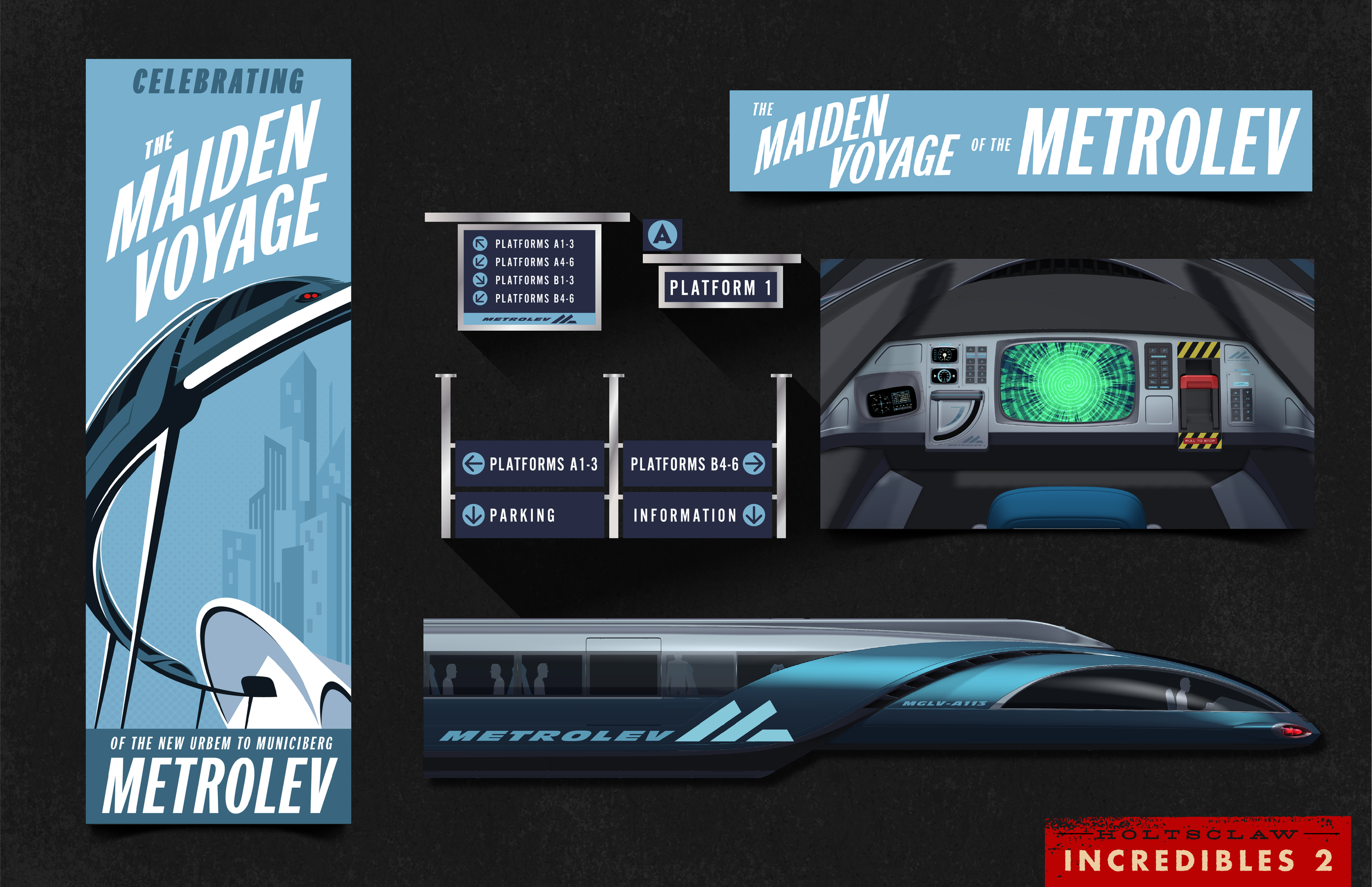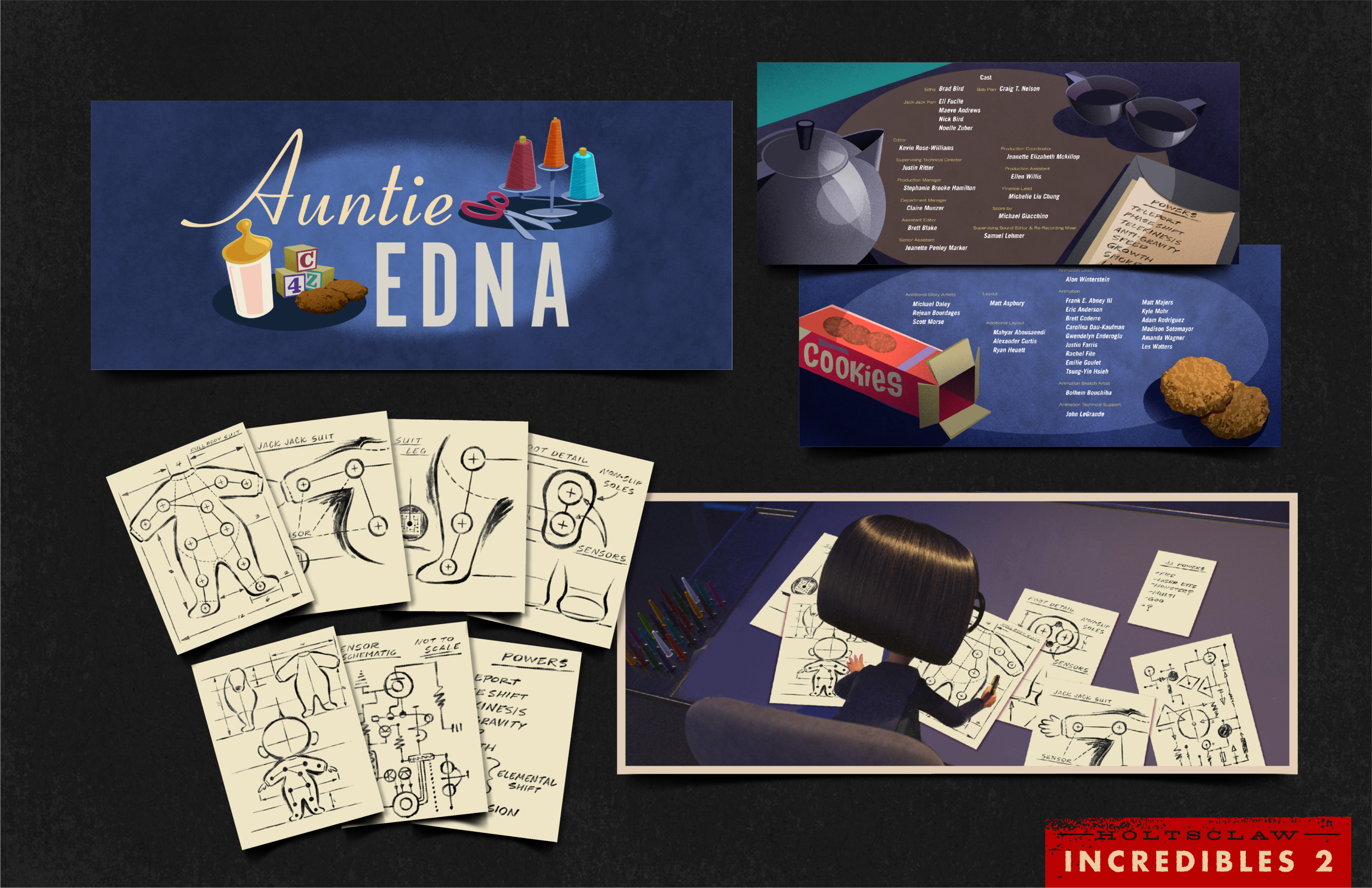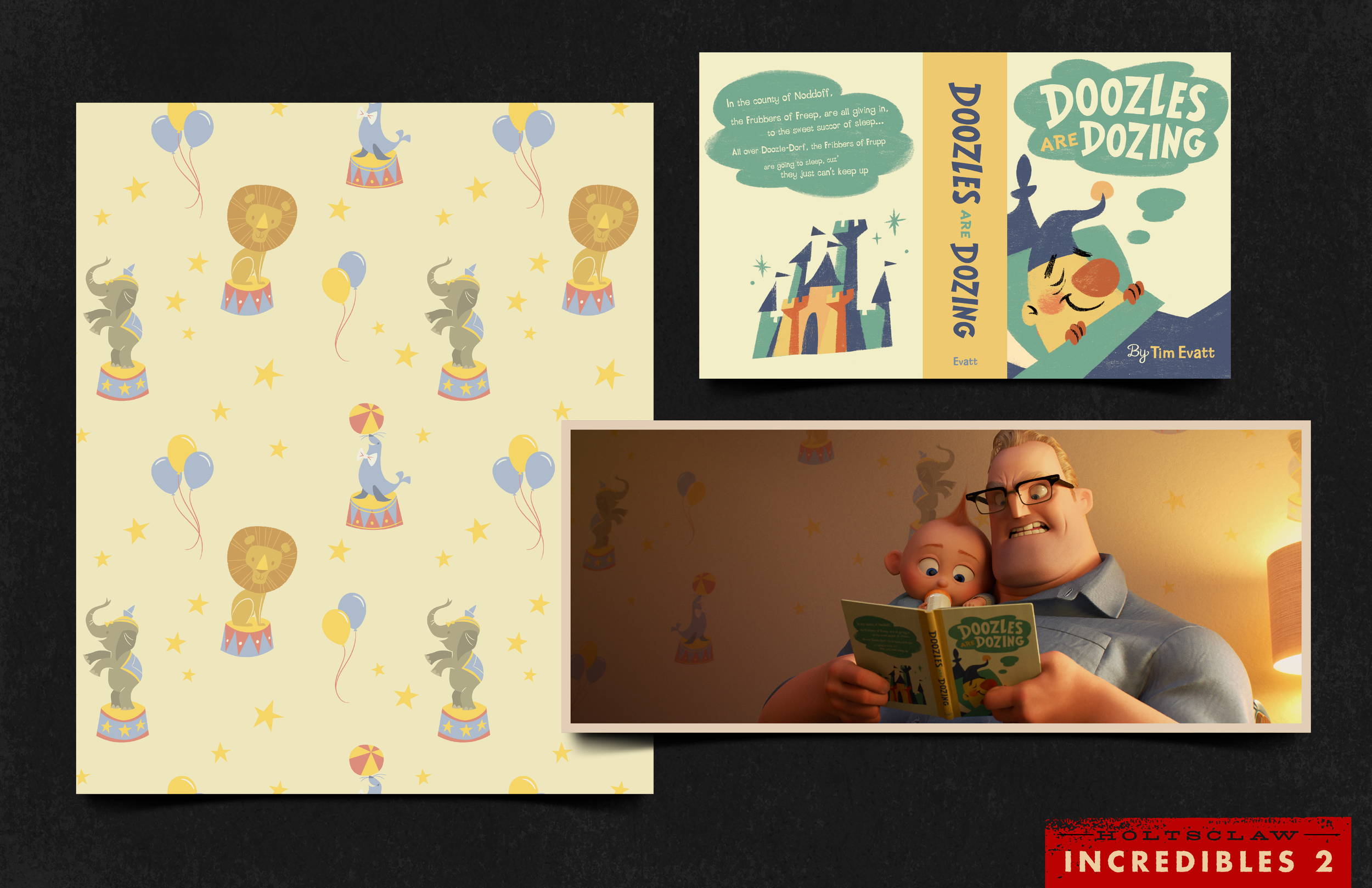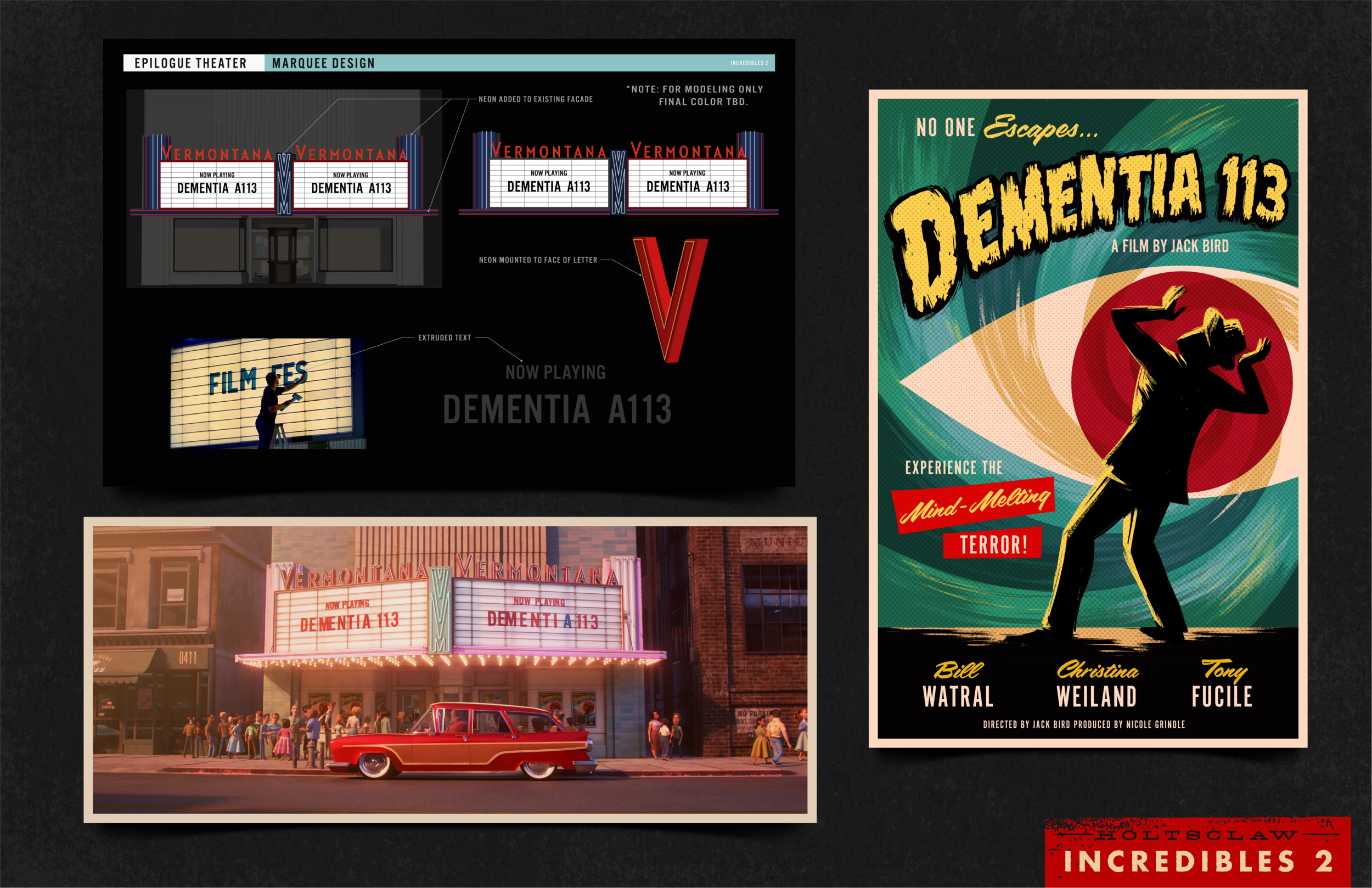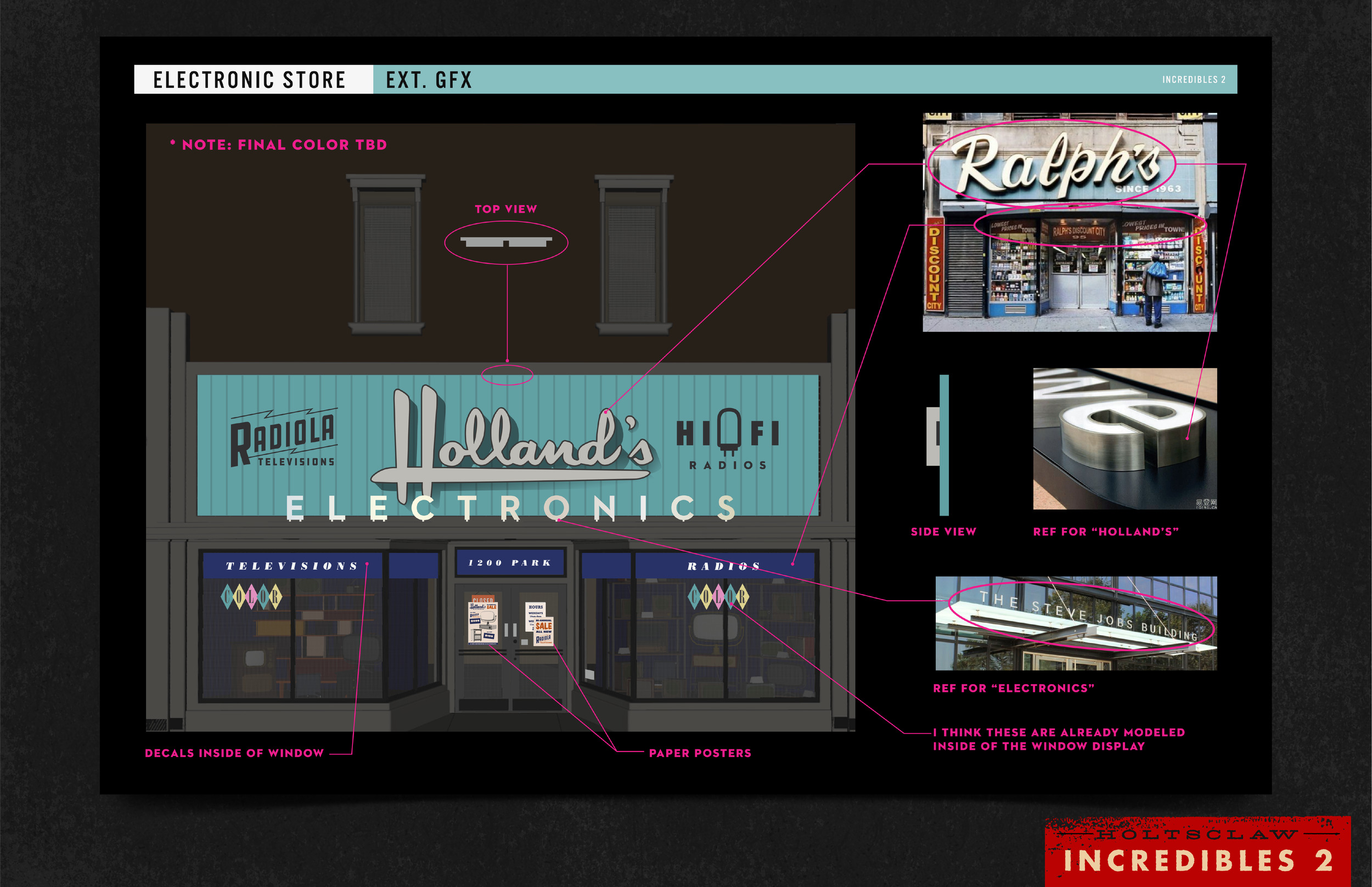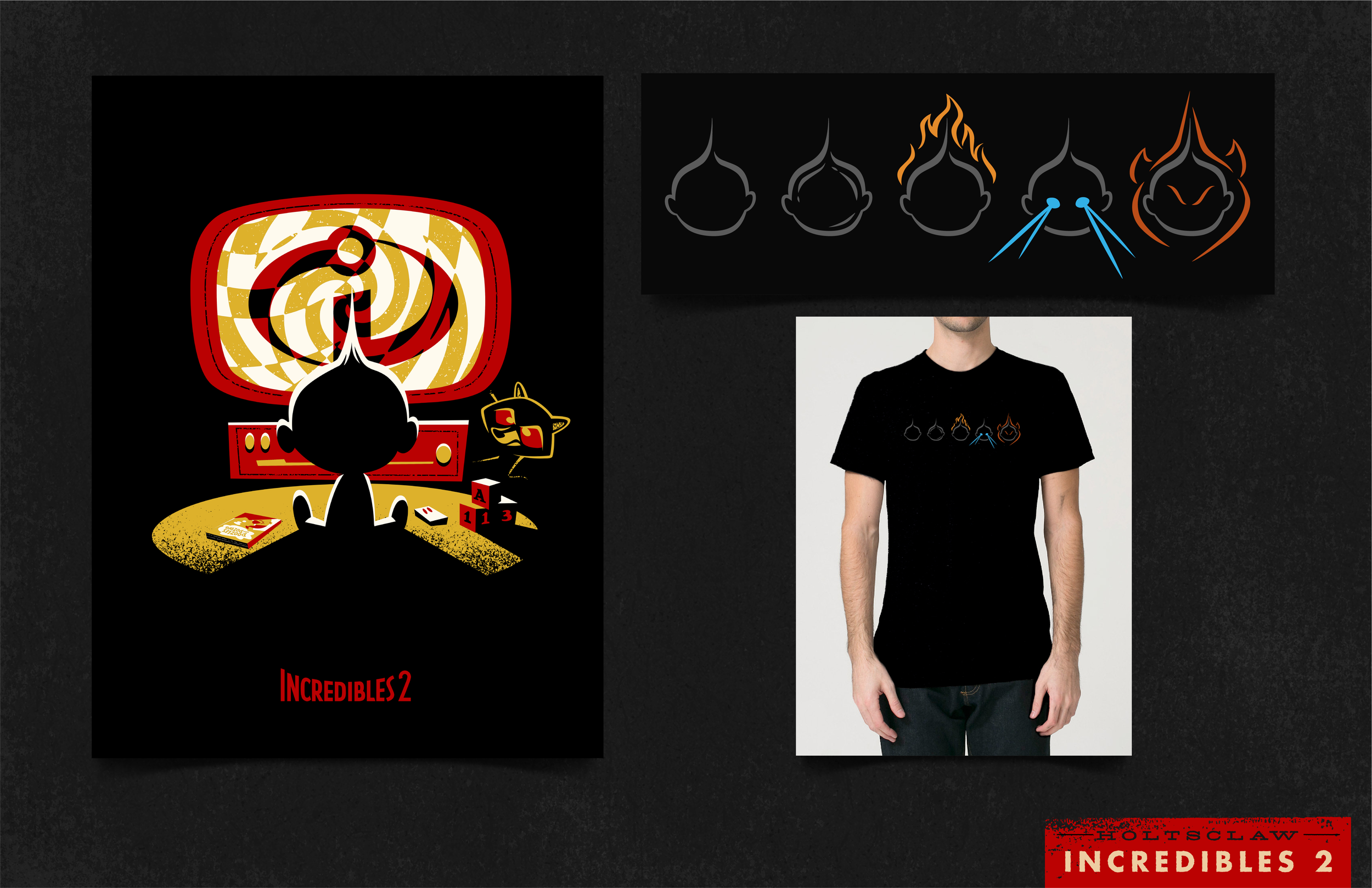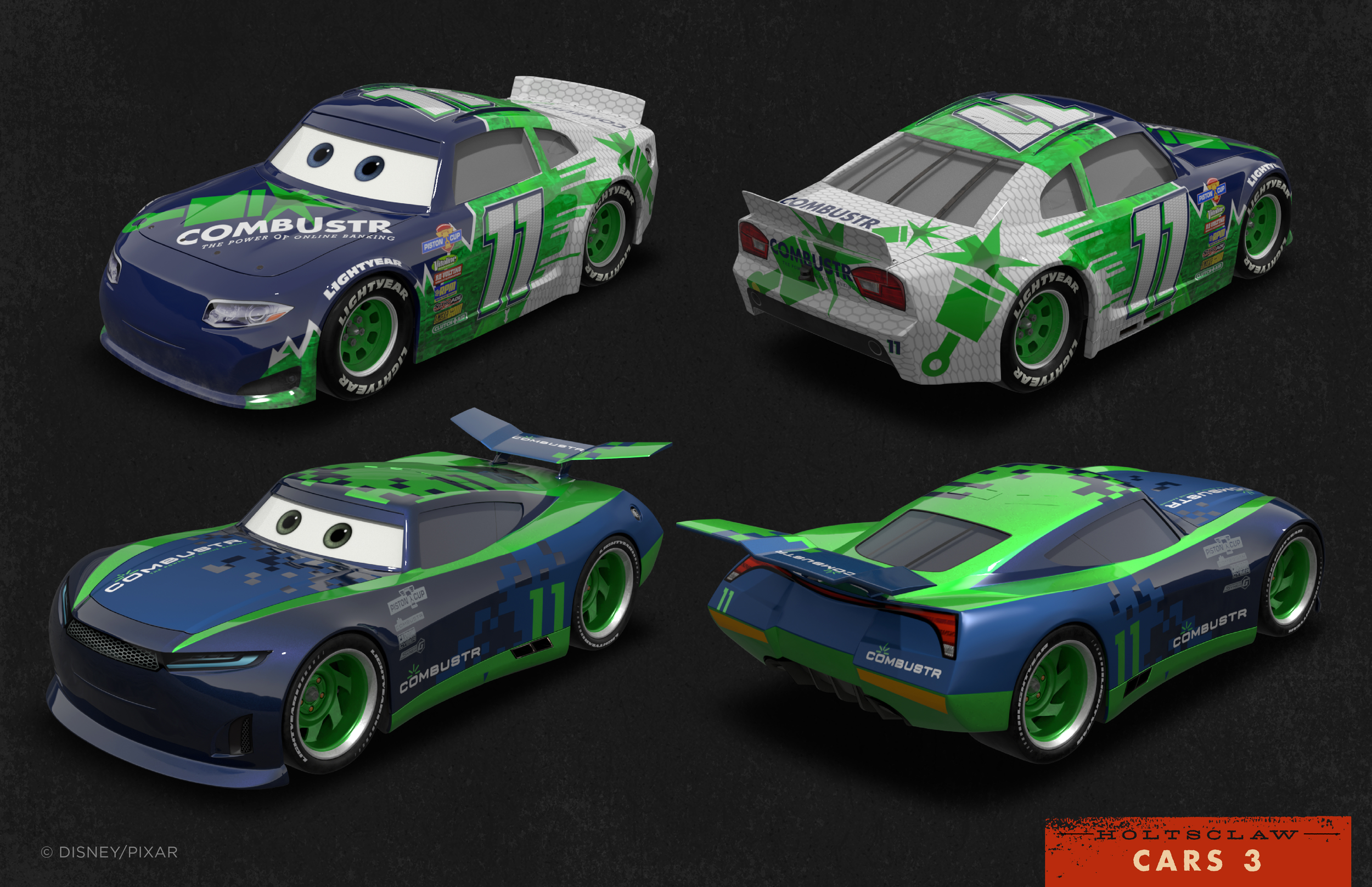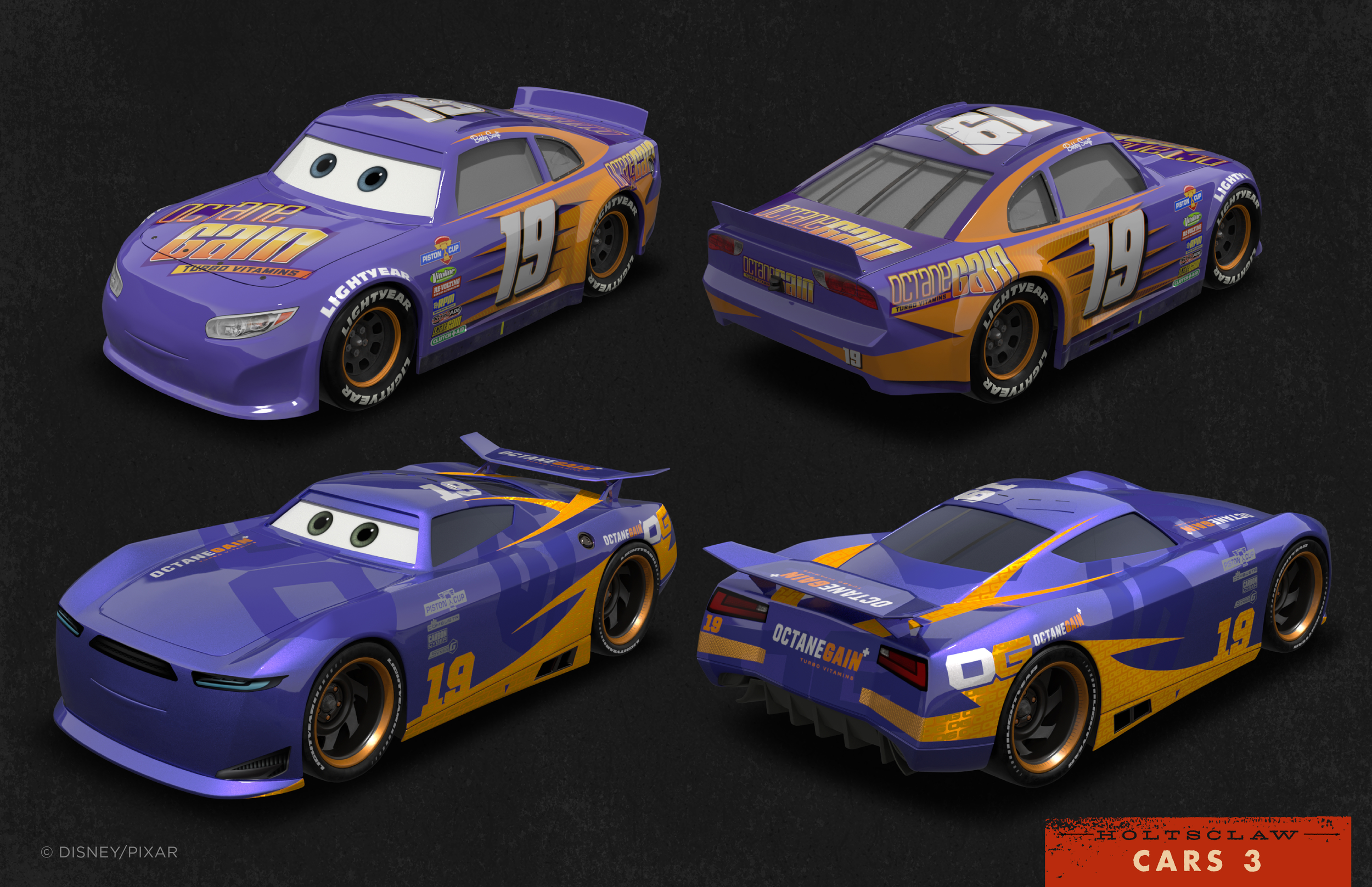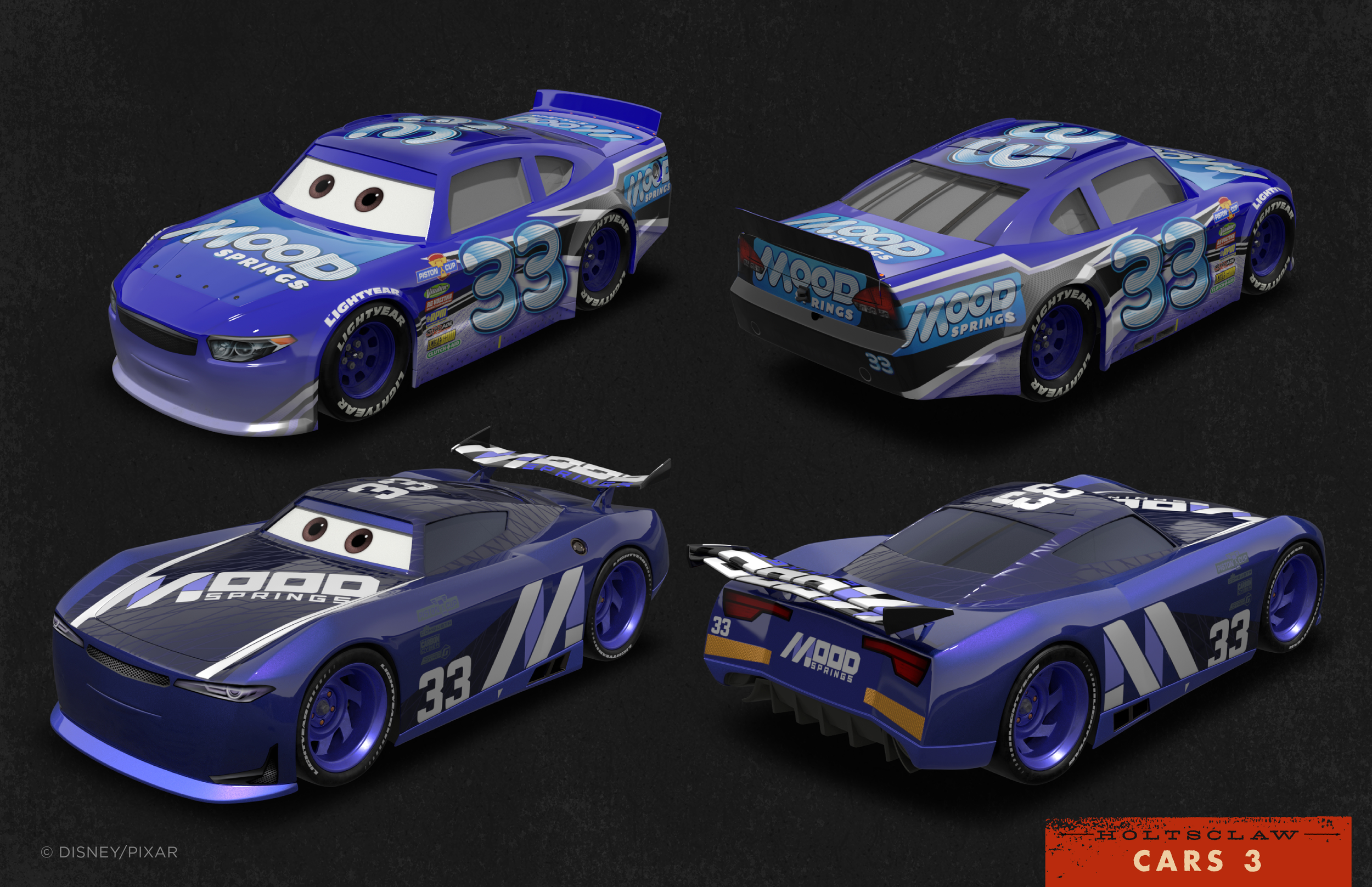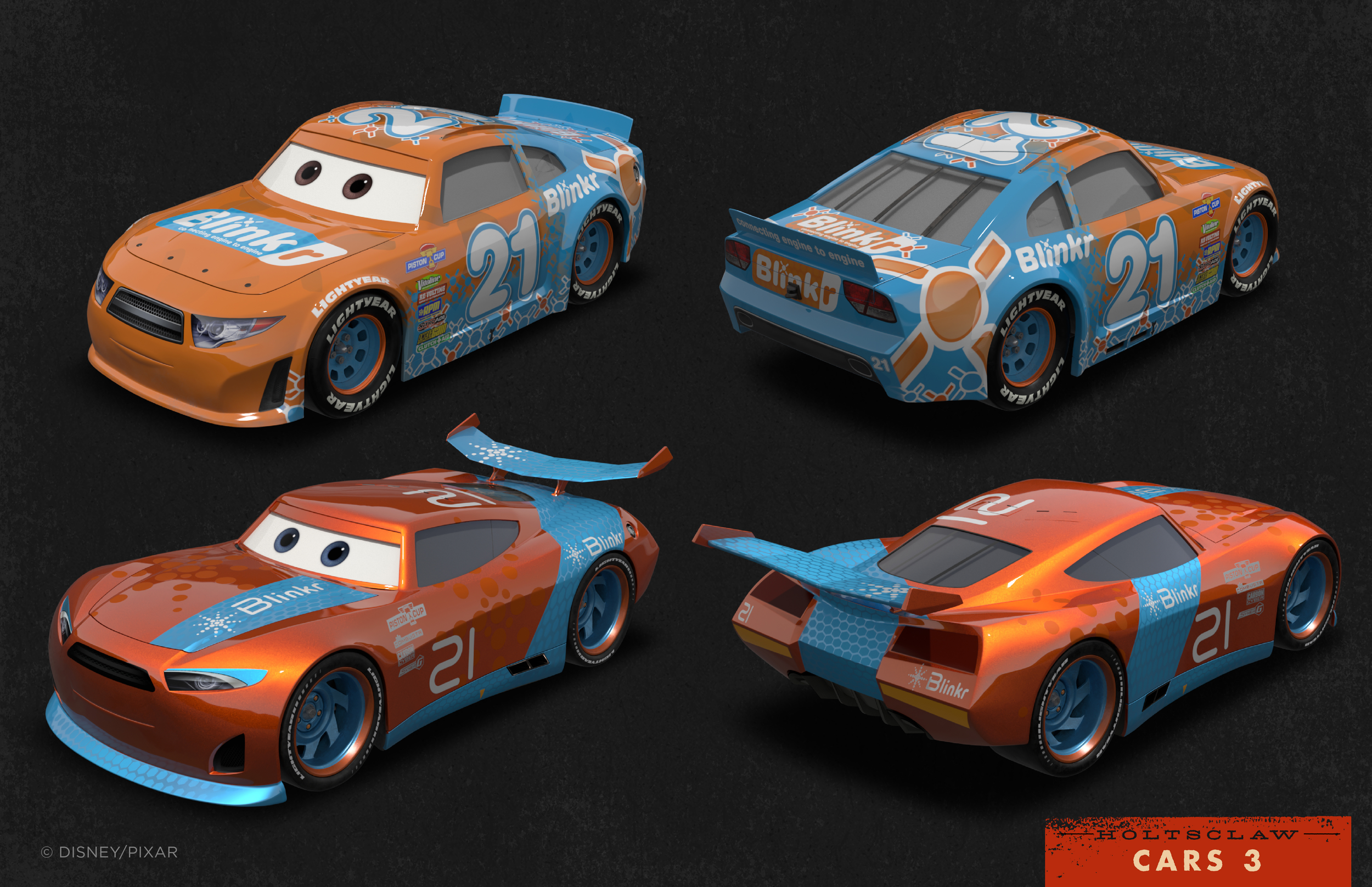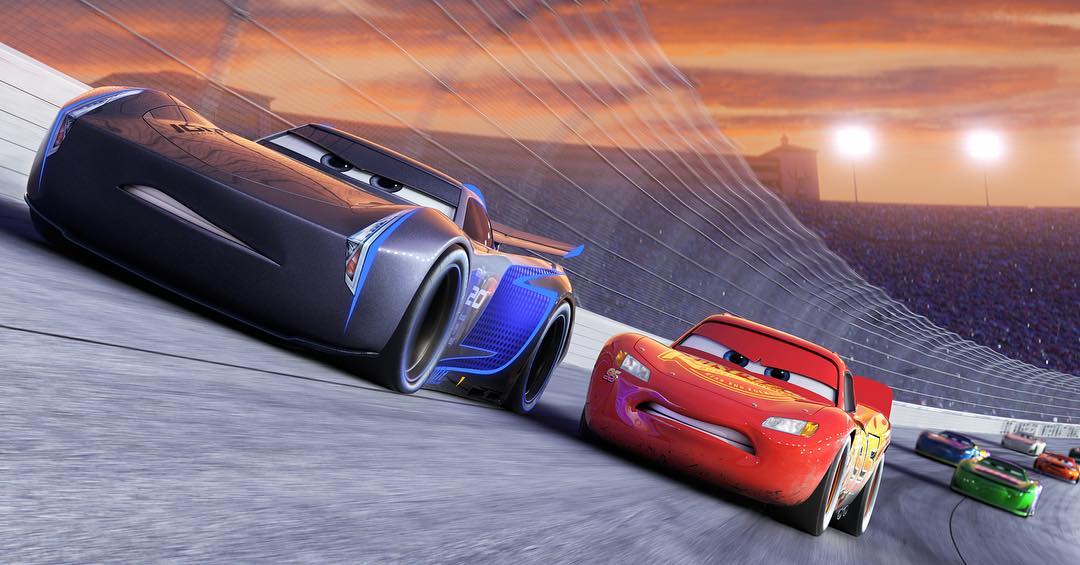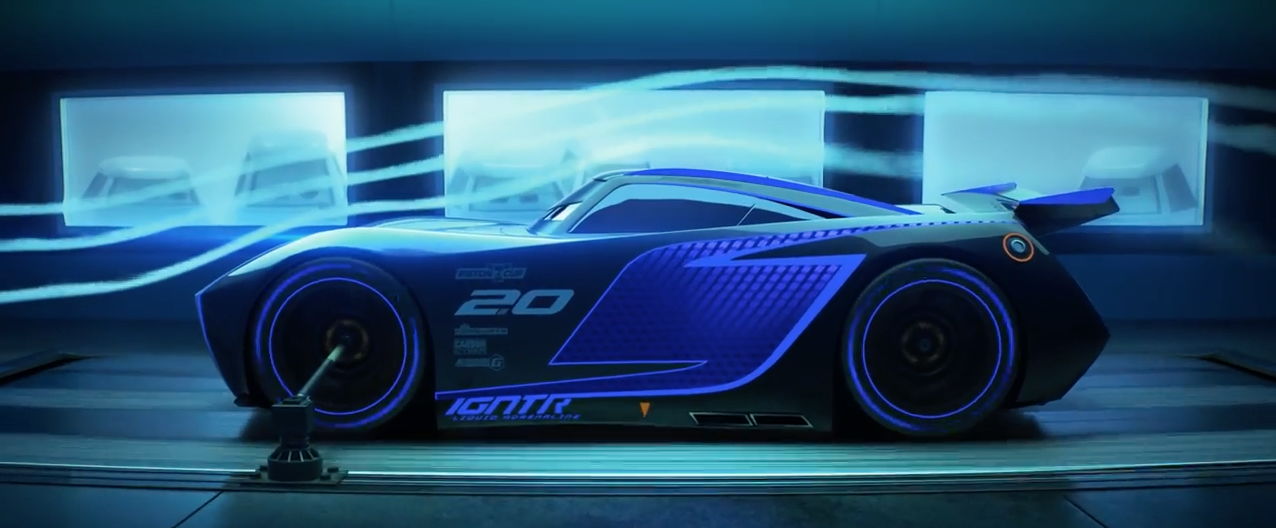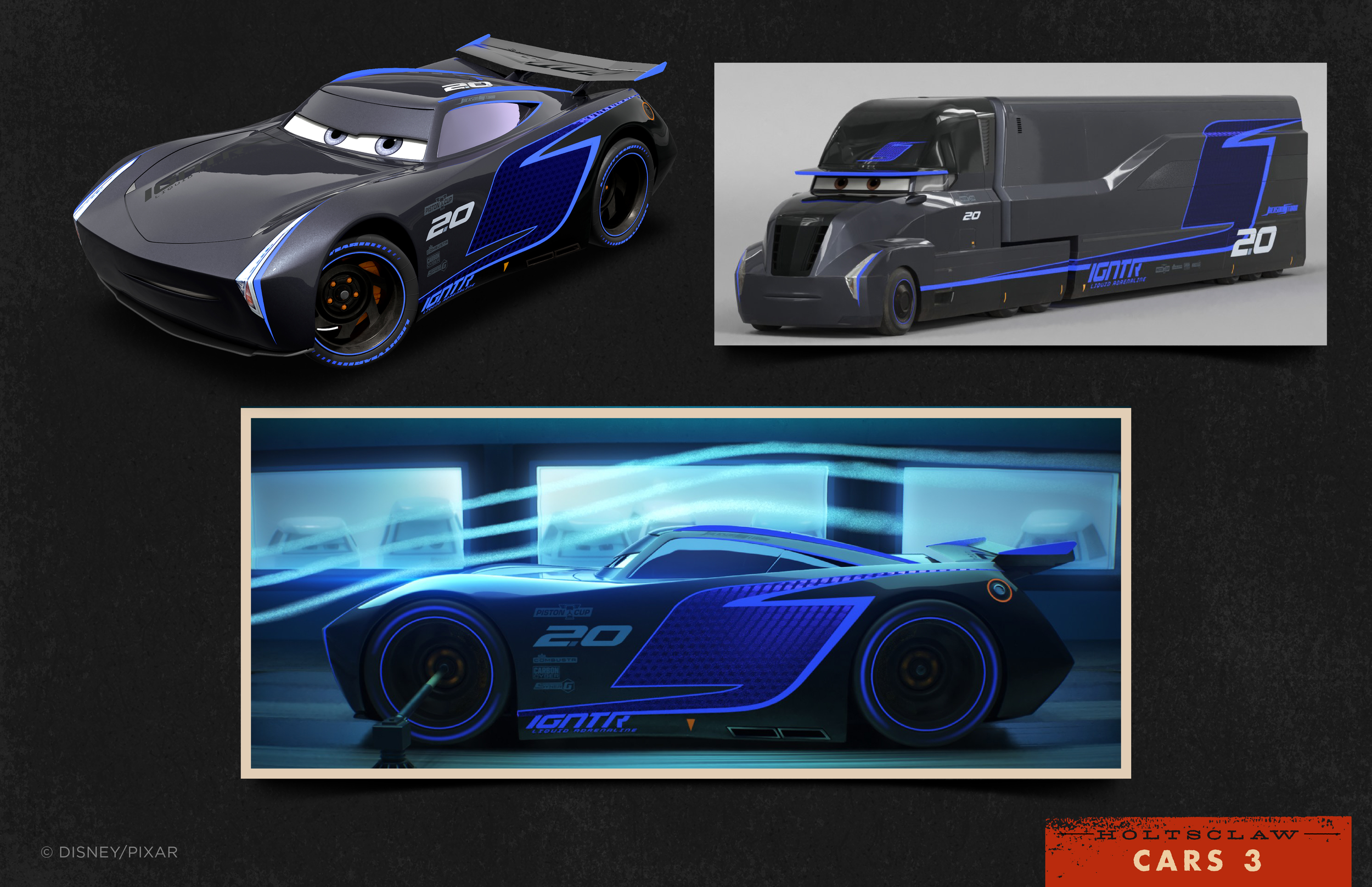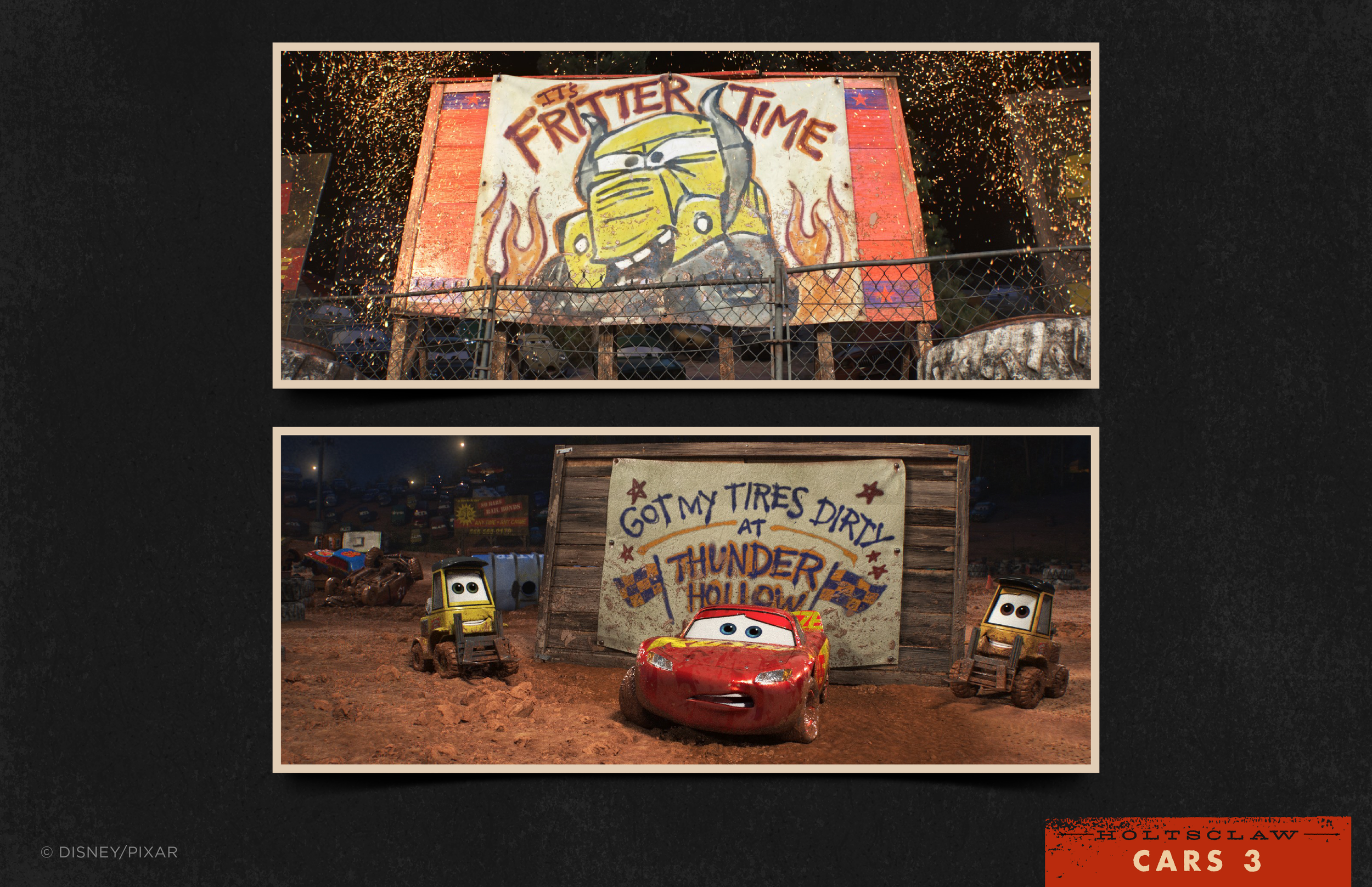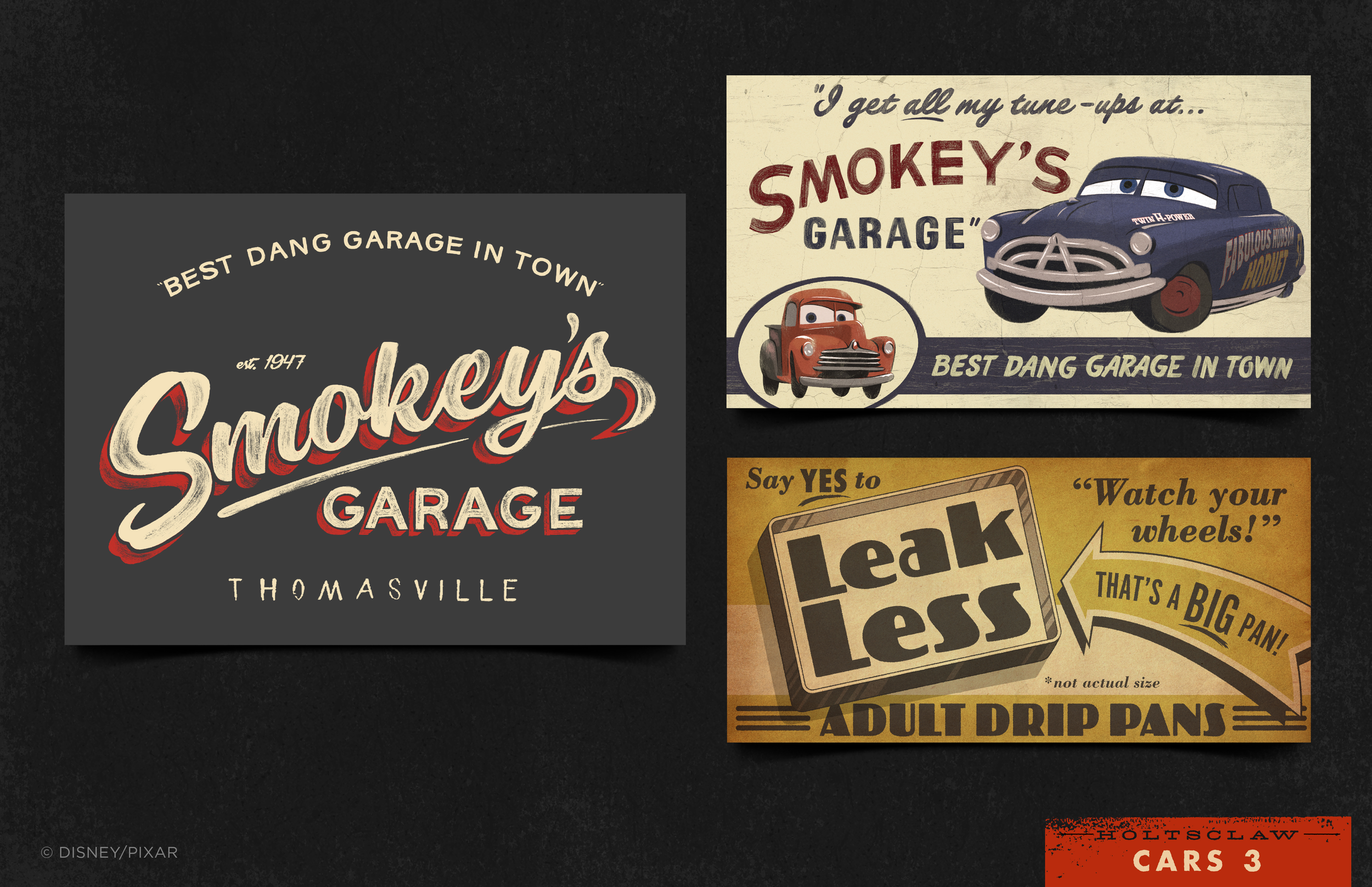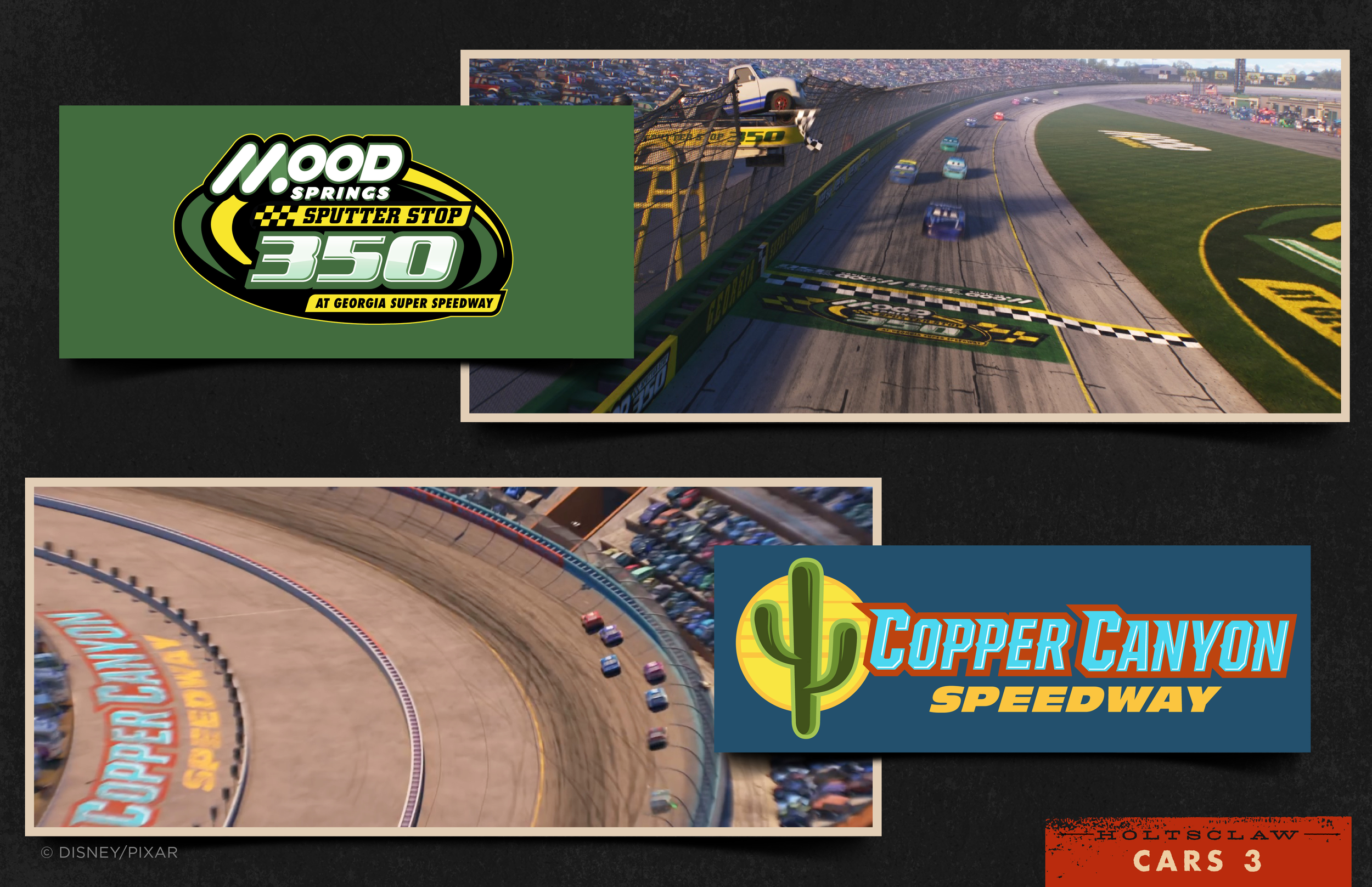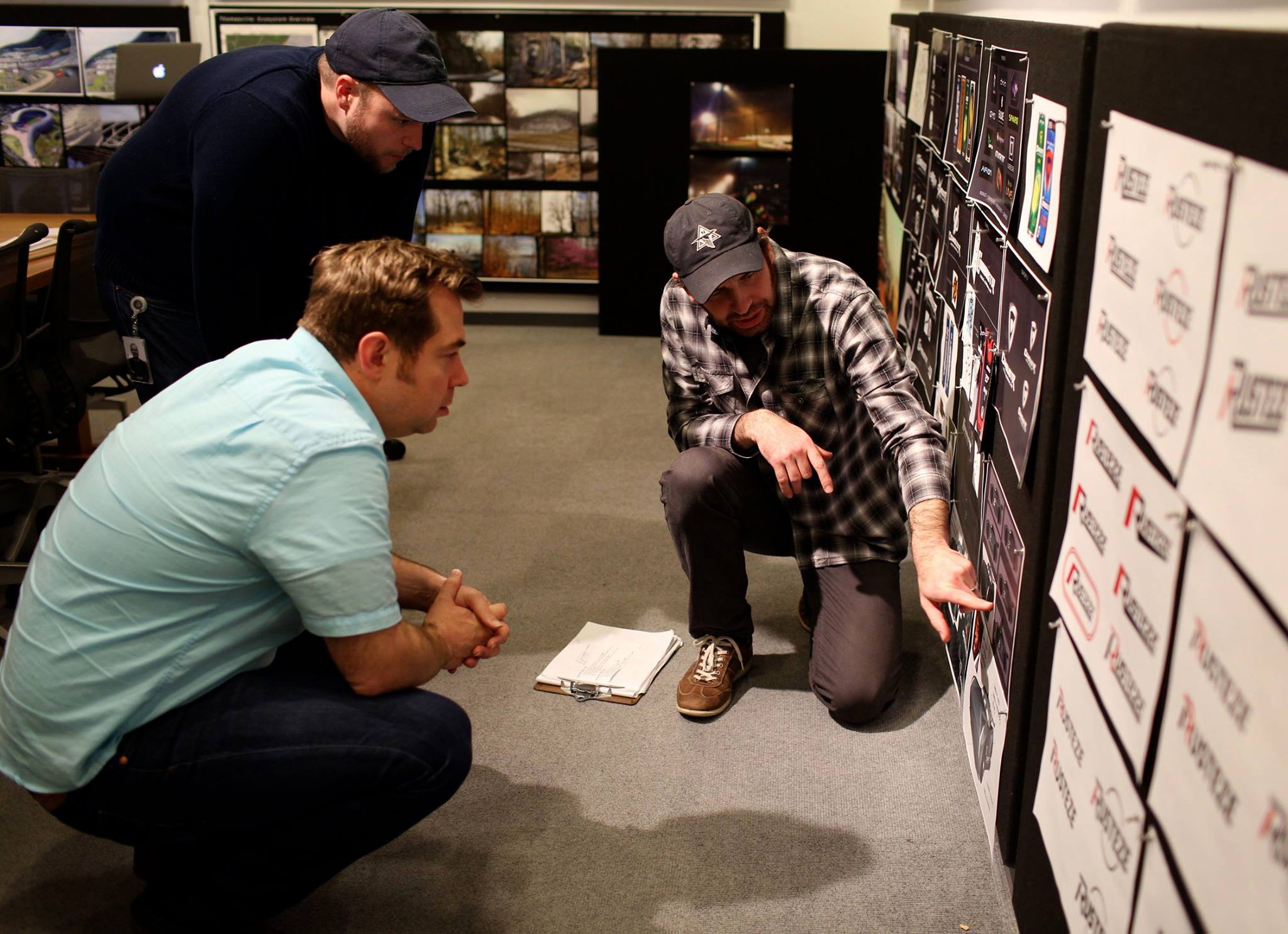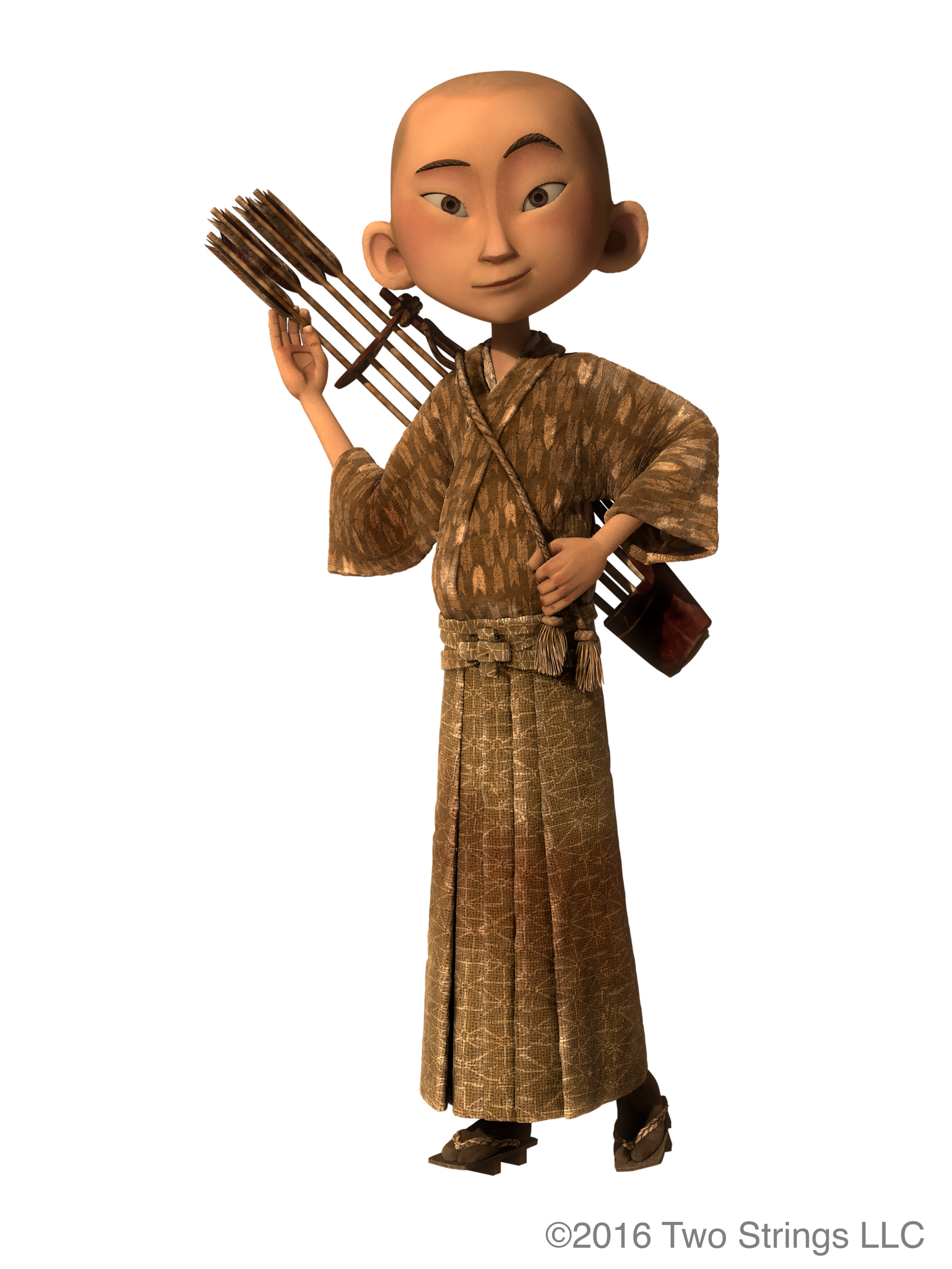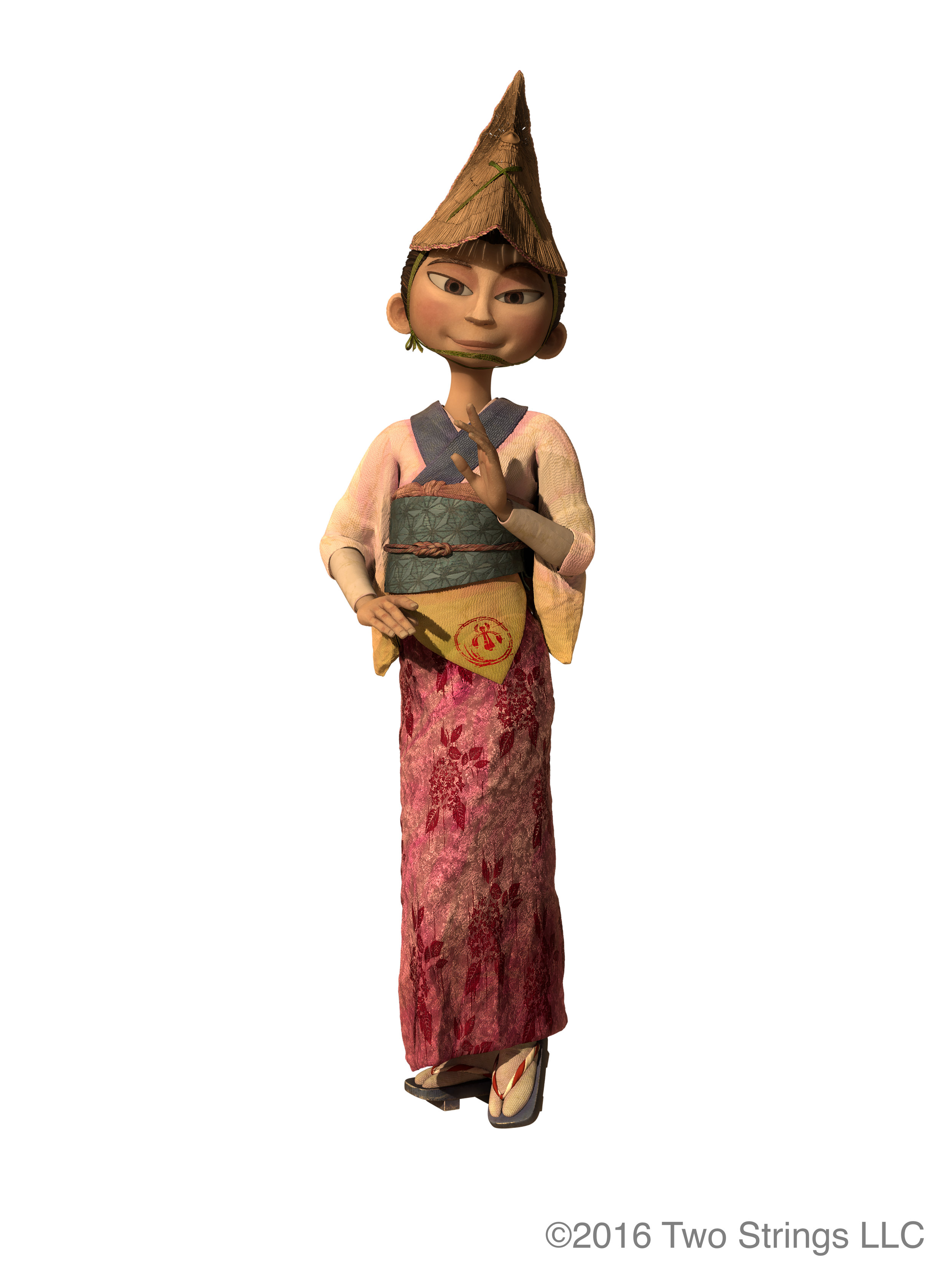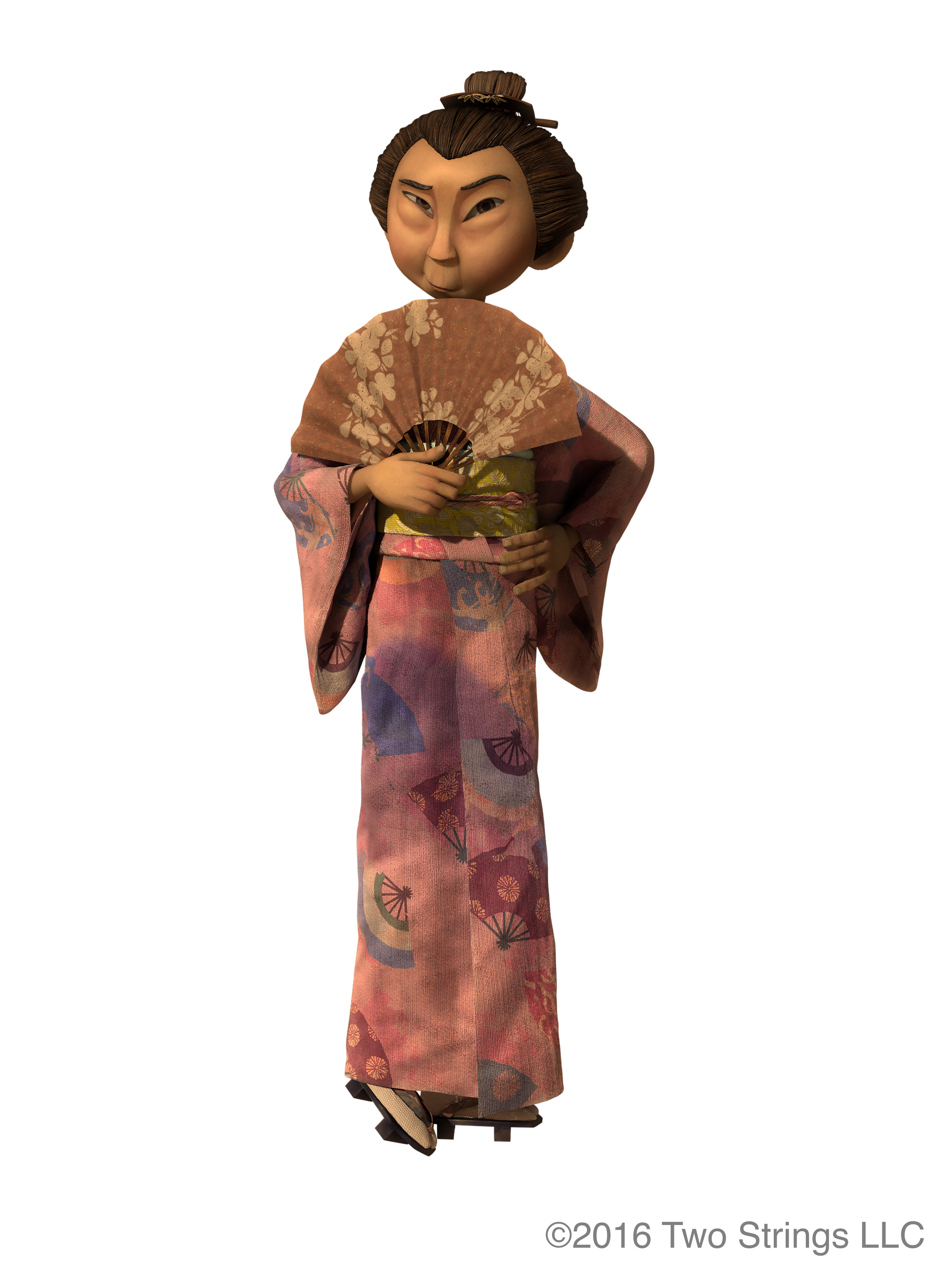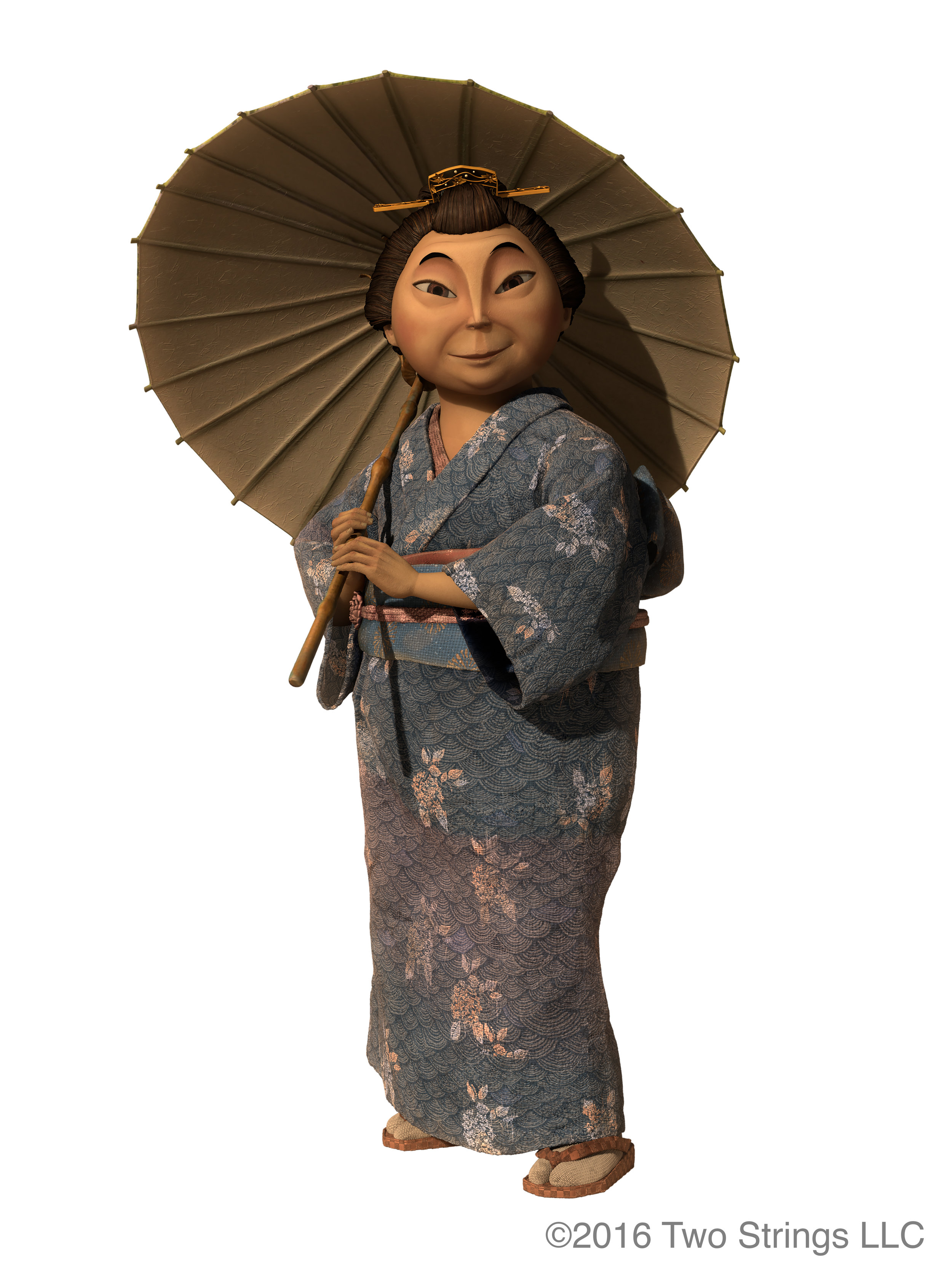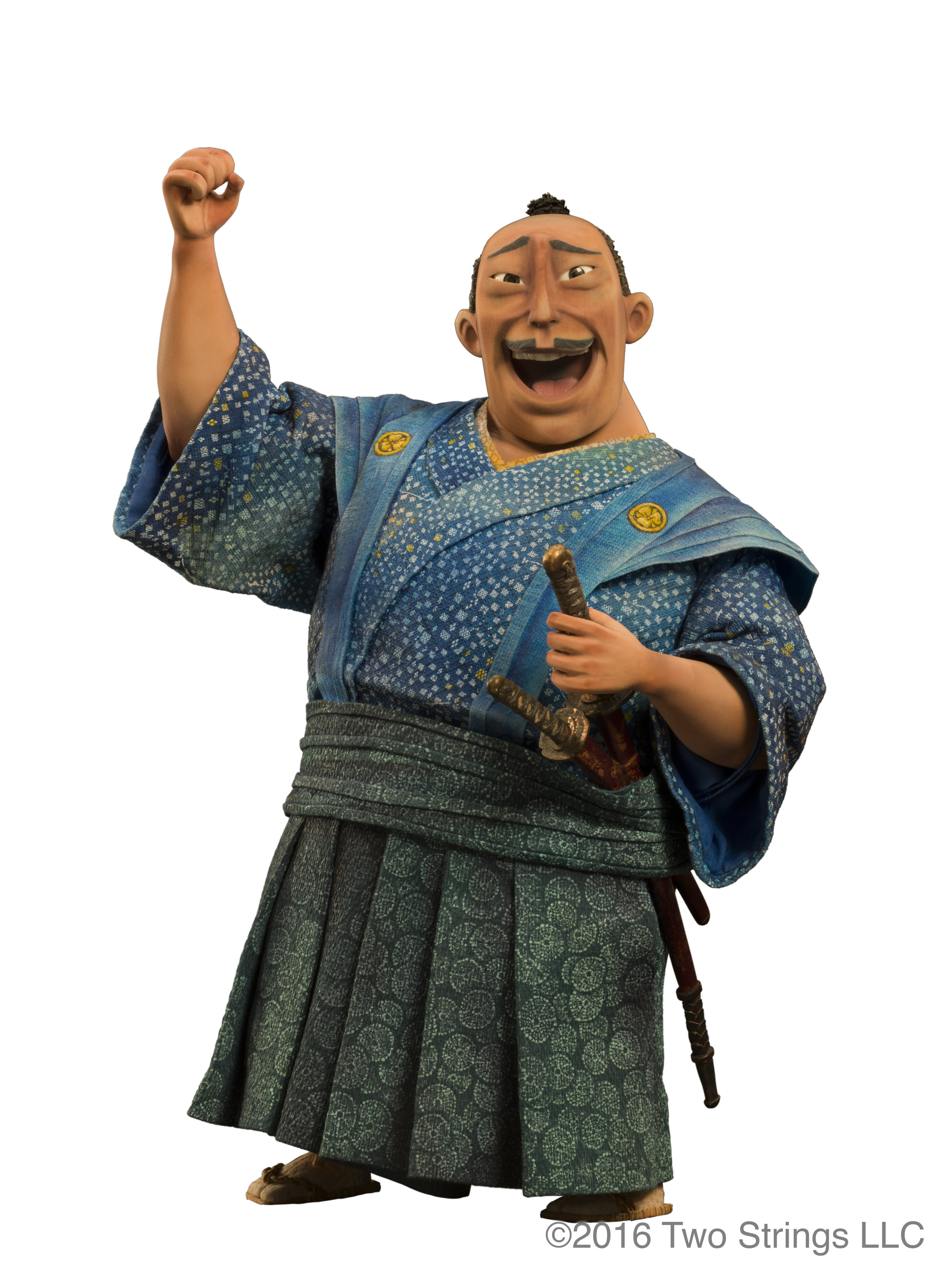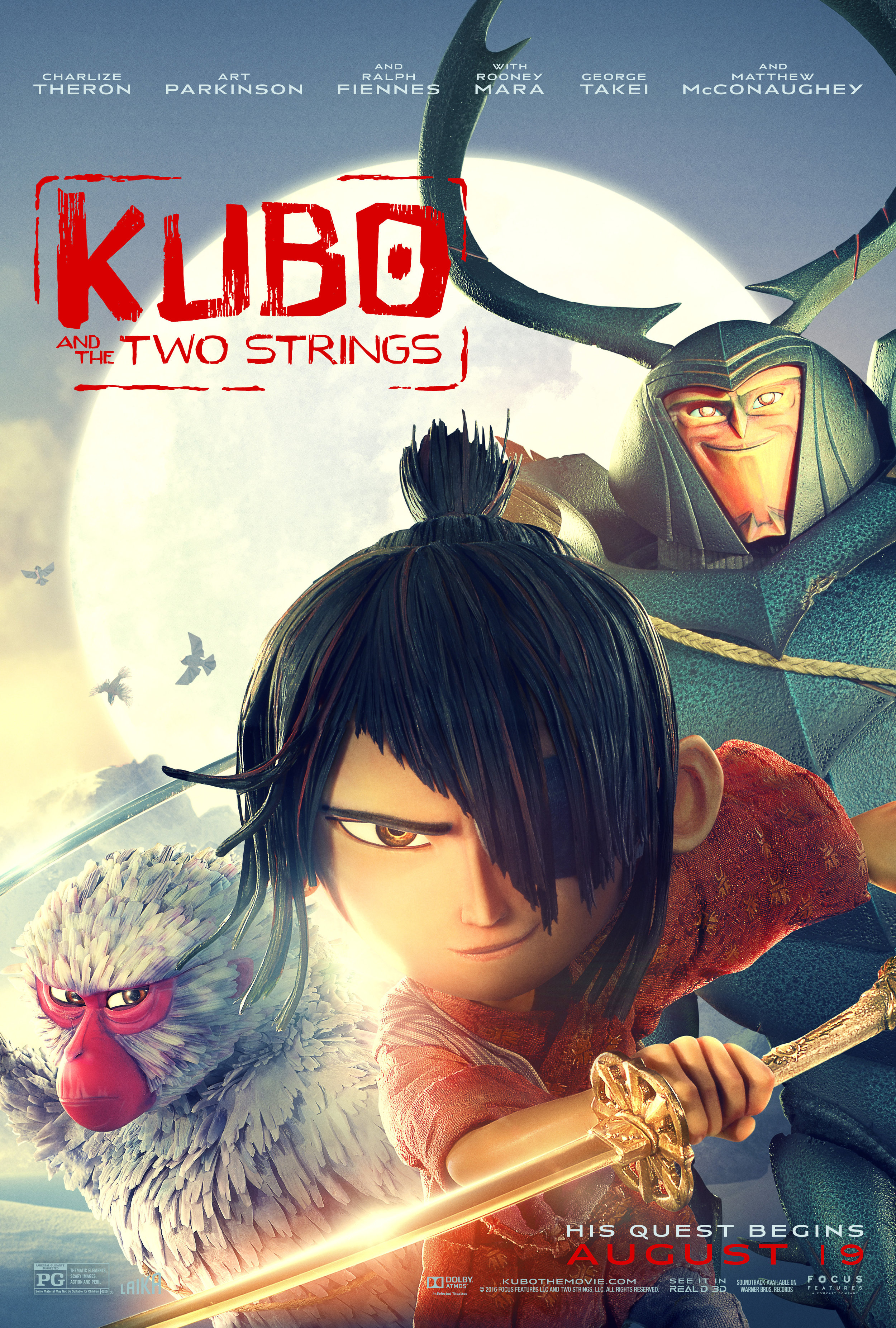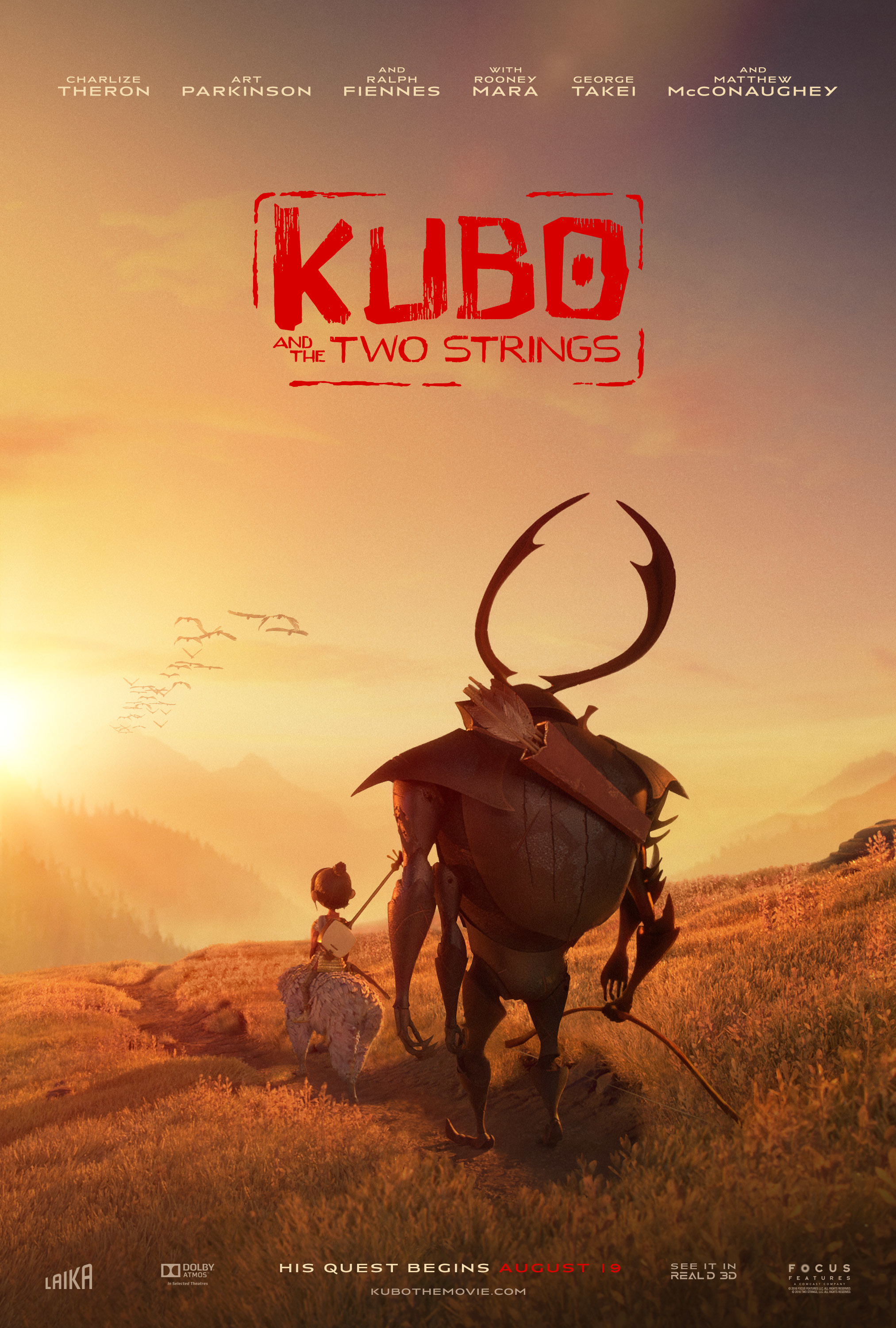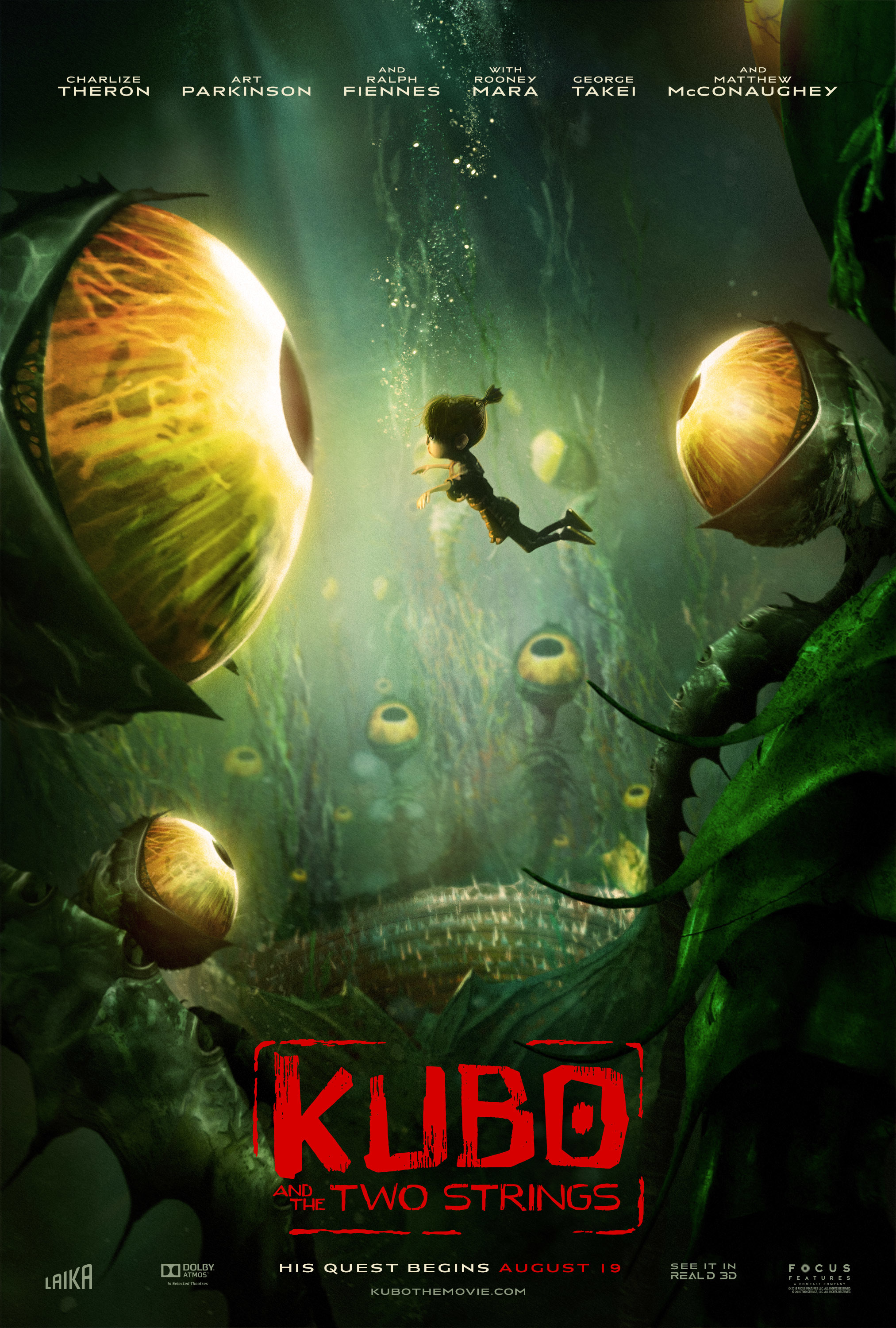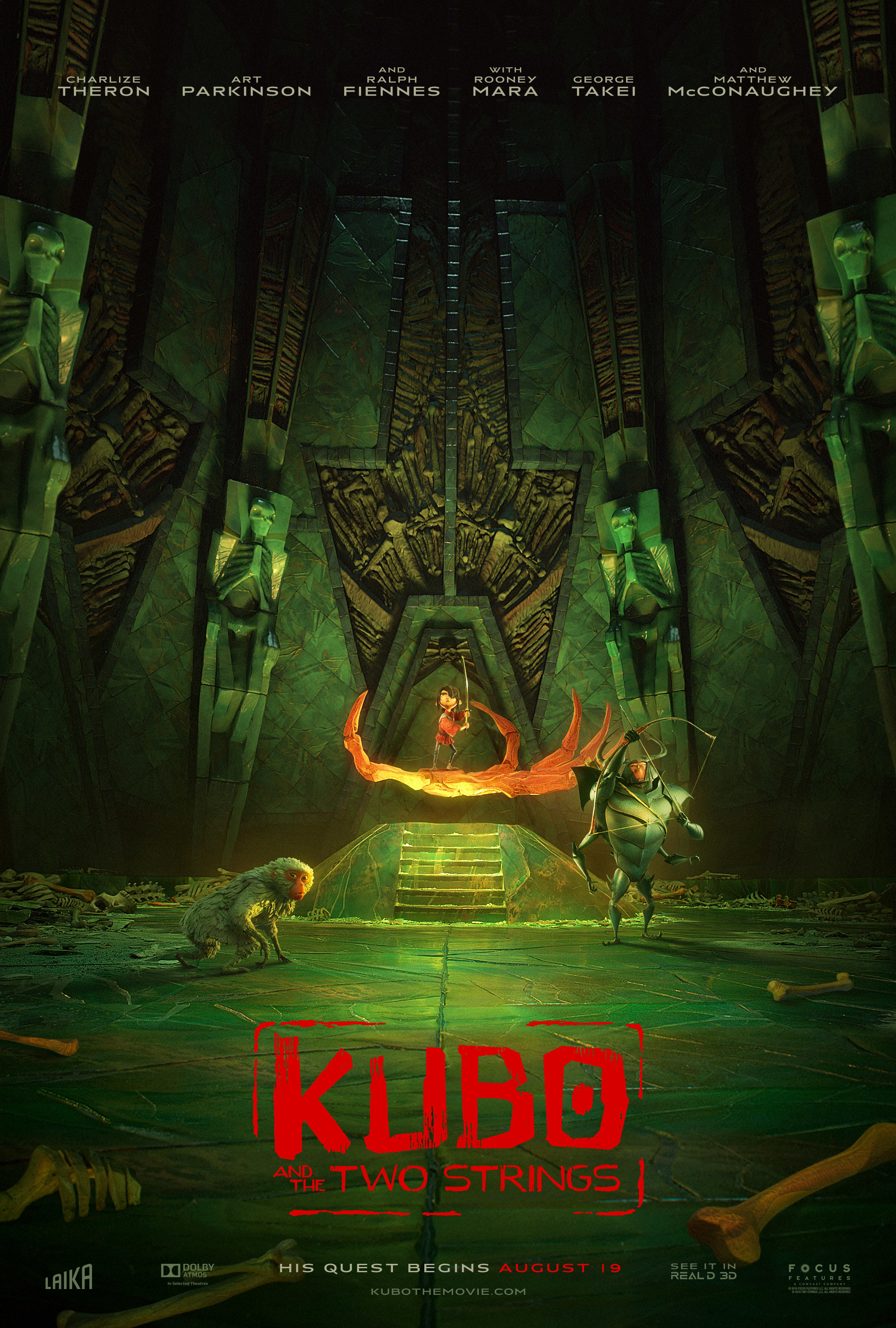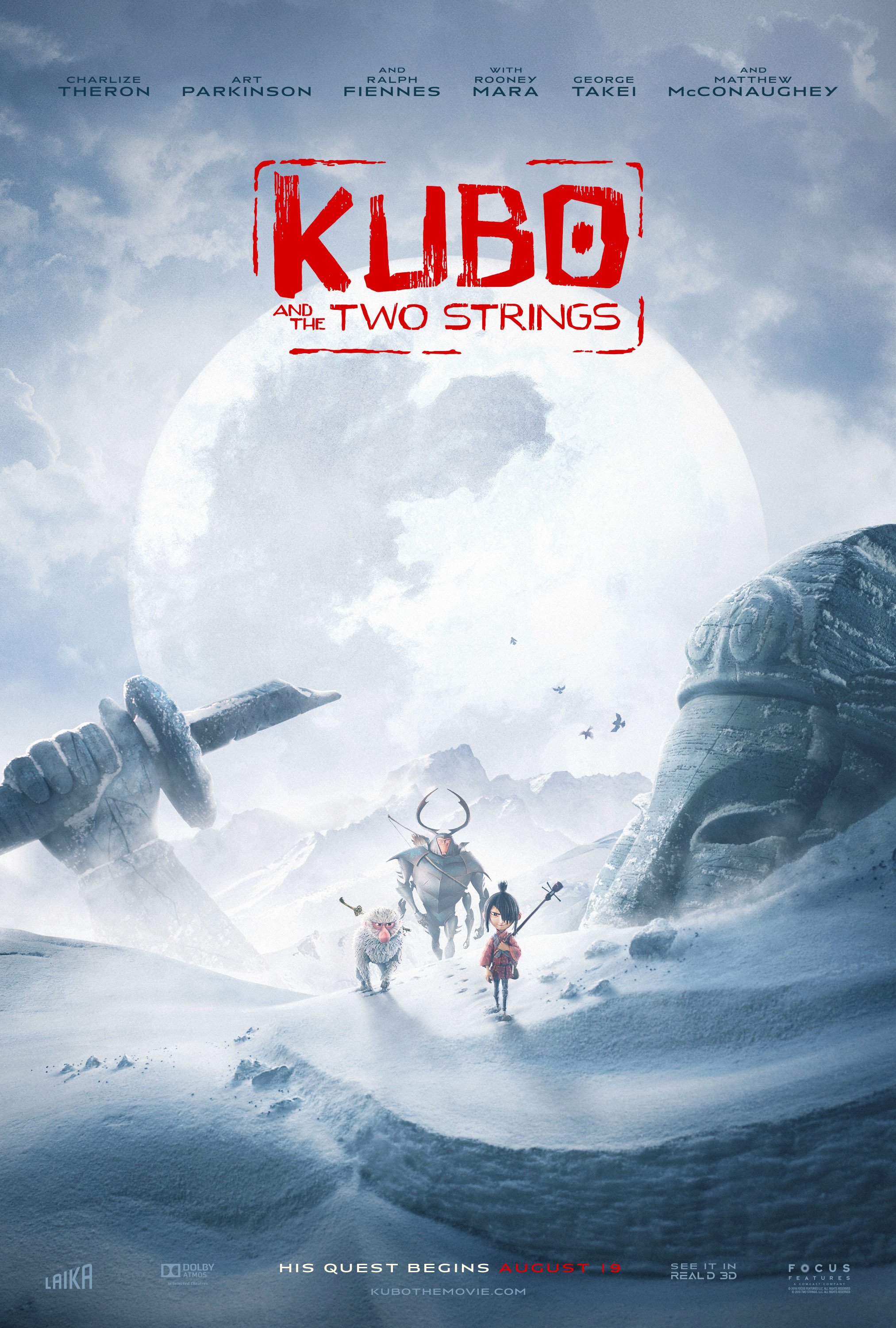I remember seeing the first Incredibles film in college with a few friends. We went on opening night and the theater was packed. I remember thinking that the way the movie opened with the old film footage of a younger Mr Incredible, Elastigirl and Frozone being interviewed was such a different way to open an animated film, and it just got better from there. The whole thing was so stylized and just…cool. I loved the mid century aesthetic. When I got to Pixar and heard that they were working on a sequel, I knew I wanted to be a part of it.
I joined the Incredibles 2 art department in the Fall of 2016 and one of the first things we did as a group was take a research trip to Palm Springs. At the time, the story was still in its early stages and a few of the sets were under way. There was still a lot left to do and Palm Springs was the perfect one-stop-spot for us to find design inspiration.
PALM SPRINGS RESEARCH TRIP
We were able to take an architectural tour of the city and had access to private homes that aren’t usually open to the public.
One of the most memorable houses was the Frey house which was designed by architect Albert Frey and was also his personal residence. It sits on a hill looking down on Palm Springs.
It happens to have a giant boulder that is half inside and half outside of the house, which is an element that ended up in the new house that was designed for the Parr family.
Here is an outside view of the house. Pictured here is character designer Deanna Marsigliese.
Another place we toured was Sunnylands, which is a sprawling estate with multiple buildings and its own golf course. It was owned by Walter & Lenore Annenberg. Walter was the founder of TV Guide and Seventeen magazine. It has also been a favorite retreat for Presidents through the years.
Sunnylands was so much bigger than the Frey house and it was great to see an example of mid century modern architecture at a larger scale.
We also visited private residences that had amazing special features. This house in particular had a pool that butted up against the living room and a bar that you could swim up to.
Here are some finished shots of the new Parr house. You can see how we were inspired by the hillside placement and indoor/outdoor feel of the Frey house:
Combined with the huge scale of Sunnylands:
And some of the cool special features found in some of the other homes we visited on our trip.
Pictured here is Nathan Fariss- Sets Supervisor, Tim Evatt- Set Designer, Robert Imbur- tour guide, Kat Hendrickson- Art Coordinator, Philip Metschan- Previs Lead, Isabel Conde- Art Manager, Kyle Mcnaughton- Set Designer, Devon Stubblefield- Art Intern and the home owner.
One of the best things about visiting these homes was seeing the interior details that felt like perfectly preserved mid century time capsules. There was so much inspiration to be found in the furniture that the homeowners chose and the artwork they displayed.
I loved this house because they displayed a few original Disneyland attraction posters, which we were already using as inspiration for the movie. Seeing them in context like this showed how perfectly this art style fits into this kind of environment.
In touring the homes we were also able to get up close to and photograph so many small details. A few of the homes had original appliances that we were able to photograph, like the oven on the left and the wall clock in the center. All of the colors and materials we saw were helpful in the shading work in the film.
INSPIRATION & REFERENCE
The world of the Incredibles is very specific in its design, but also a little hard to define. Ralph Eggleston, the production designer always summed up the look of the Incredibles by saying “you know it when you see it.”
To get into developing artwork for the film, I did a deep dive into the first Incredibles. One thing I noticed is that while it is definitely mid century modern inspired, not every piece of mid century design would fit into the world of the Incredibles. I tried to get more specific about defining the look of the graphic art in the film.
Some of the most inspiring and useful sources of inspiration were the 1962 World’s Fair in Seattle and the 1964 World’s Fair in New York. The World’s Fairs were examples of futurist thinking from a mid century perspective. They took place in the 60’s, but were about a distant space age future which was perfectly in line with Brad’s vision for the world of the Incredibles.
The shapes and lettering styles seen here are simple and bold. There isn’t a lot of tiny detail. Its direct and clean and modern in an understated way.
There were so many great artists and designers working in the mid century that were inspirational to our film. One of the most helpful sources of inspiration was the designer Alvin Lustig, who created all of those great book covers on the left. You can see in his work and these other examples the use of bold, graphic and modern design.
In the movie there are two cities. Municiberg, where the Parrs live and New Urbem where Helen travels to fight crime.
For downtown Municiberg, we looked at photographs of medium to small sized towns from the late 1950’s.
For the design of New Urbem, we looked at Times Square from the late 50’s. Ralph’s concept for New Urbem was that it was bigger than Municiberg, and had a much heavier, older feel.
I was also inspired by the work of Miroslav Sasek. It was great to see how he simplified a complex city scene. It looks stylized and the same time believable.
Here is a collection of some the graphics we developed to use in New Urbem and Municiberg. Everything from Shop signs and billboards to posters and murals.
For the Tracking Screenslaver sequence, Helen is jumping around the rooftops of New Urbem. To add a bit of interest, we added rooftop billboards which were inspired by the signage seen in Times Square. This also helped identify which city we were in for the New Urbem sequences, since the movie jumps back and forth between the two cities. The graphics help to tell the story and add dimension and detail to the shot.
For the pan up reveal of Helen on the radio tower, we added all of the rooftop signage we had in our inventory. In the middle of the shot you can see “Quest Airlines,” an homage to Jonny Quest, a major influence on Brad and the world of the Incredibles.
Incredibles 2 was filled with screens, and designing and animating the motion graphics was another significant aspect of the work the graphics team. As you can see here, most of the motion graphics are communicating some story point to the audience. Not only are we trying to literally tell the story in the design, we also tried to make them cohesive aesthetically so they all look like they belong in the same world. We also try to add humor where possible. In the shot where Violet and Dash give their names to the Incredibile for the first time, we pitched Brad the idea that it would be funny if it took a picture of them when they said their names, and the photos were sort of panicked headshots. He loved the idea, and the characters, animation and lighting teams all jumped in and helped make the photos possible. Its a quick shot but it gets a little laugh every time.
In a lot of modern movies, the motion graphics are really complex and detailed. For the motion graphics in Incredibles 2, we looked at the Futurama exhibit at the 64 World’s Fair, the screen designs in Alien and Rogue One. All of these have a simplicity to them that is perfect aesthetically for the world of the Incredibles.
We created an entire branding pass for the fictitious company Devtech. Devtech is a tech company that specializes in lenses and cameras, and Brad liked the idea of using an eye as the icon. The star burst is a motif that can be seen around the Devtech headquarters, so we combined that element with the eye to land on the final design. This branding is used across the film and helps to visually connect the Deavor storyline.
Here is an assortment of prop graphics that were created by fellow graphic artist Paul Conrad and I for the Parr kitchen. The challenge is to create something that looks and feels right when it is sitting next to the characters. Ideally, the same design thinking that goes into the character design goes into the set and prop design as well, making the world feel cohesive.
One of the hardest things to do was this cereal box where a character illustration appears next to one of our real characters. I turned to Teddy Newton for help on this illustration, and the stylization feels perfect next to Dash. We also play up the humor of it being an over the top sugary cereal so that when it gets swapped out for Fiber O’s, we understand where Dash is coming from.
We created the Happy Platter and Safari Court branding to tell the story of the two environments. When the audience sees these places, they recognize something they might have seen before. These memories help them connect to the mood we are trying to create.
SCREENSLAVER MOTION GRAPHIC
One of the things I worked on for the longest time while I was on the film was the Screenslaver motion graphic that the character uses to hypnotize viewers. One of the challenges was that it would appear in many different places…tv’s, goggles, a cage, just to name a few.
Ralph and I looked at the work of experimental animator Oskar Fischinger and were really inspired by the graphic shapes and repeated patterns he used.
Here’s another, later Fishinger piece with more color.
This is a sketch that Brad did on the back of a script in a meeting showing what he was envisioning for the Screenslaver hypnosis design. It was extremely helpful to see exactly what he was looking for.
From that sketch, I put together a batch of animation loops that all play around with distortion and spiral effects. I was also playing around with the idea of a spiral disrupting another pattern. Where the spiral disrupts the lines, shapes are inverted creating a swirling checkerboard effect.
The final design is below on the bottom right.
The script called for a sequence in which a fight took place in a cage made out of lights that would hypnotize Elastigirl. Ralph found this product called an LED Curtain that can project video through a web of tiny LED lights. This was the inspiration for Screenslaver’s cage.
From that inspiration, set designer Paul Abadilla designed the interior of the cage, lining the walls with light bulbs. We then projected our Screenslaver motion graphic through the bulbs to create an effect that looks like it could hypnotize Helen.
Here’s what the final image looks like in the movie.
DEAVOR MEETS SUPERS
There is a sequence in the movie we called Deavor Meets Supers, where Winston is laying out his plan to the supers. This was a fun small project because it was almost like its own little short film within the movie.
Starting with the storyboards, I created this collection of images and paired them with the lines of dialogue Deavor says. This is how I pitched it to Brad. The concept was that you would see each super in their glory days, and that pose would then be singled out and brought forward, before transitioning to the lineup of generic supers. And aesthetically all of this was meant to look like it was part of the Devtech brand, like it was a film that the company had created.
Here’s how it looks in the final film.
END CREDITS SEQUENCE
One of the last things I worked on for this project was the End Credits sequence. The original film had an amazing graphic stylized end credit sequence designed by Teddy Newton and Andy Jimenez. For Incredibles 2, Brad wanted to do something that felt similar stylistically.
A team was assembled. Shown here is Andy Jimenez - Animation Lead, Teddy, Ted Mathot - Head of Story, and Derek Thompson - Story Artist. We sat in this room for a few days and drew and talked about a bunch of ideas for the end credits.
After a day or two we had a few boards filled with story sketches and layout ideas.
Here you can see a few discarded ideas, but also one that stuck, The idea of Jack Jack popping through a bunch of different heads stayed in the final sequence.
And here’s one of Teddy’s masterpieces that unfortunately didn’t make in.
After some refining, we filled up the art room with more nailed down storyboards of how each title card would flow into the other. Laura Meyer and Paul Abadilla also joined in to help us get through all of the artwork we would need to create.
And this is a detailed shot of our rough storyboards. Each column represents a card, and the images below are the transitional pieces of art that we needed to connect them.
Here are some more of the storyboards. You can also see the little post it notes with assignments. Teddy helped with all of the character animation, we would paint the backgrounds, and then all of that would be compiled by Andy in After Effects.
Here are a few of the background paintings as we delivered them.
We would check in with Brad each week as moved through the artwork and Teddy and Andy completed the animation.
Here are few frames of the finished end credits.
DISNEY CASTLE INTRO
In our end credits kick off meeting, Brad said “Hey, it would be cool if we could do the Disney castle at the beginning in the same style!” And he looked at me with a face that said “you up for it?” I thought it was an amazing idea. I didn’t quite know what it would look like, but I knew that it should probably be red and yellow. There’s a tradition of stylizing the Disney castle at the beginning of a disney film, and I wanted ours to be the coolest.
I looked over the standard disney castle intro and broke it down into a few key frames that I could paint and show to Brad and Ralph. So this is the first frame with the camera holding on a star.
The camera pans down and catches a train passing over a river
And flies over and settles in front of the castle. While looking at the original castle, I noticed the Incredibles logo was already hidden in the windows above the entrance, and thought it would be a great way to fade out.
After showing those initial style frames to Brad, he thought the castle could maybe be less “castle-y”. So it had to be some sort of mid century castle that wasn’t a castle, but was clear to the audience that they were looking at the Disney intro. I looked at reference of mid century modern structures like churches and other large public buildings.
From that research I created castle concepts that drifted further away from the disney castle, but kept the same silhouette. Finally we settled on a design that I think could be called a mid century modern castle.
After seeing everything together and in film order, we all thought that the Pixar logo would feel out of place if it stayed its iconic blue color. So we dug into the original files and created a stylized Pixar logo card complete with a black and yellow Luxo. The first in what I hope becomes a long tradition of stylizing the Pixar logo.
All in all I worked on Incredibles 2 for around 2 years, which is the longest I have ever worked on a film. It was the most creatively challenging and satisfying film I have had the opportunity to be a part of. We had an amazing team and I learned so much. Seeing the positive reaction from the public after all of the hard work was the perfect end to a once in a lifetime project.



